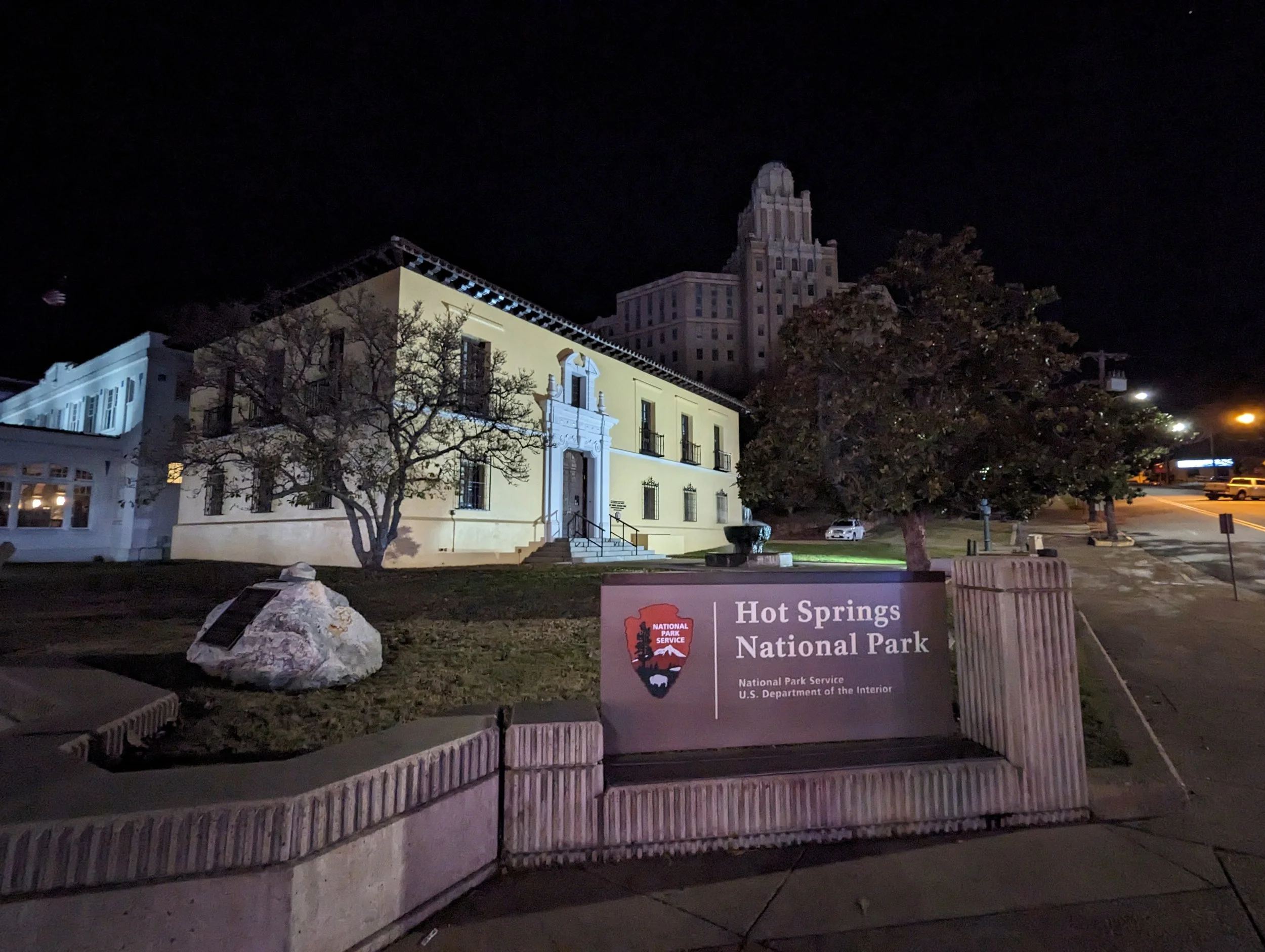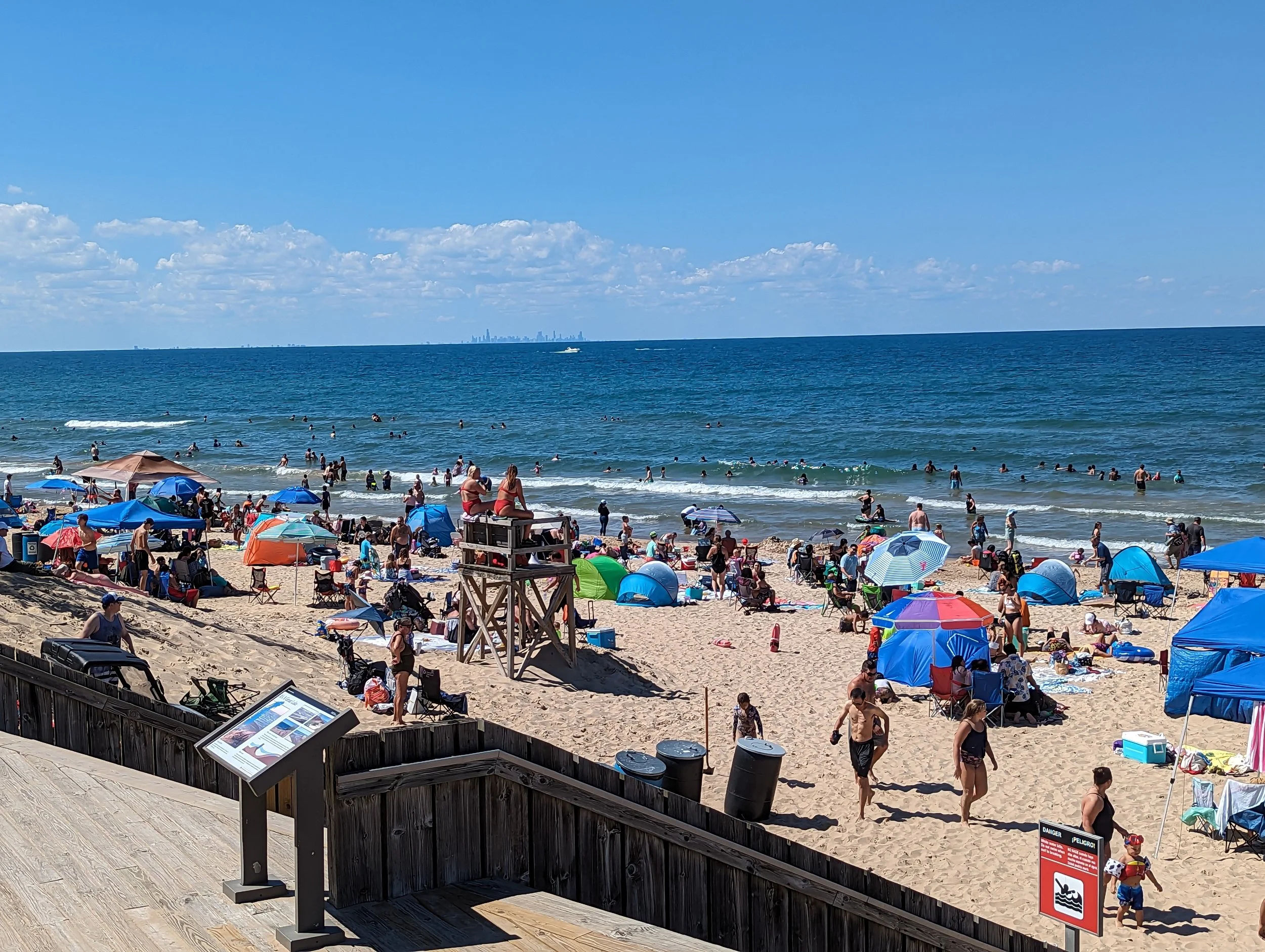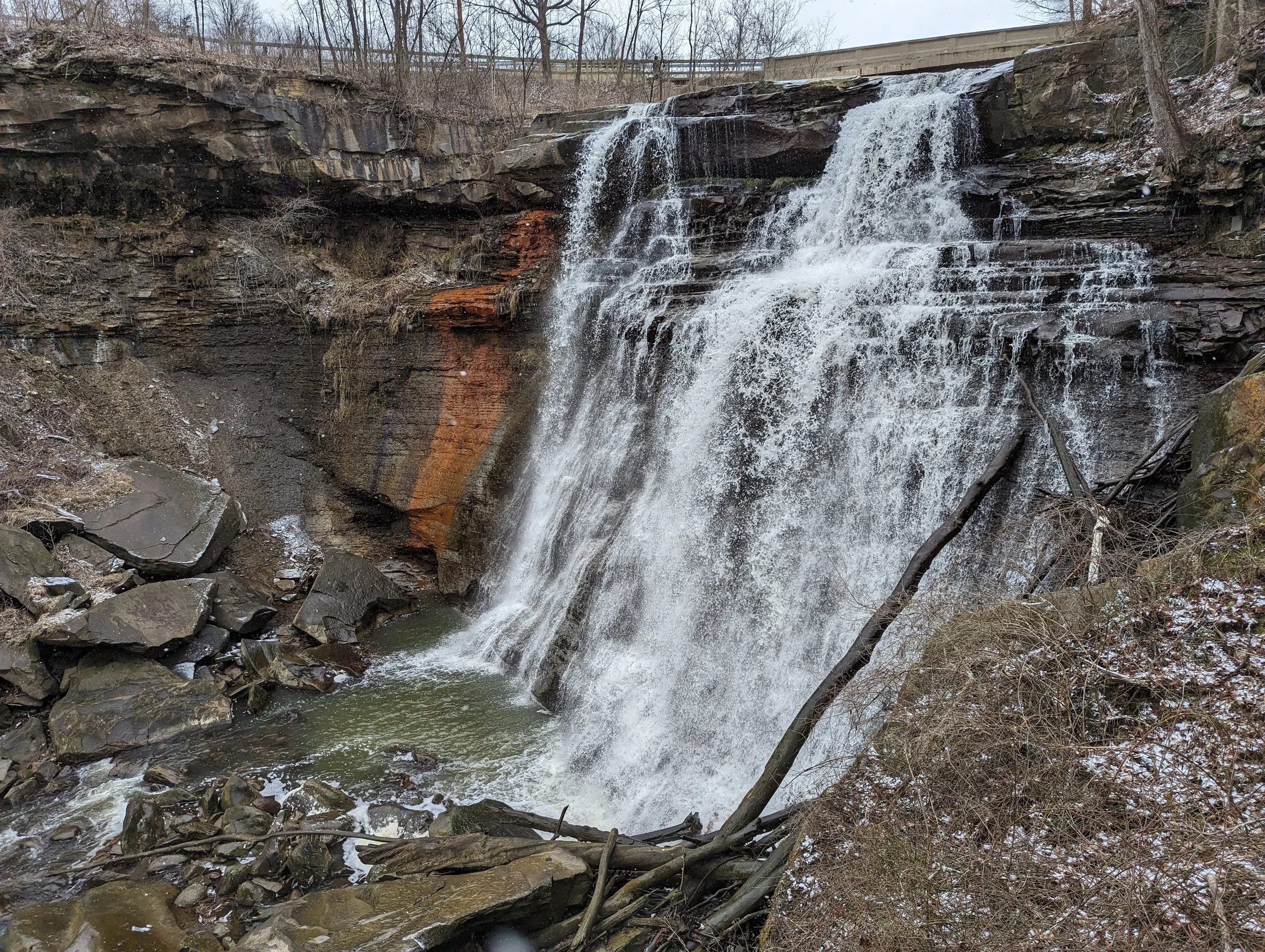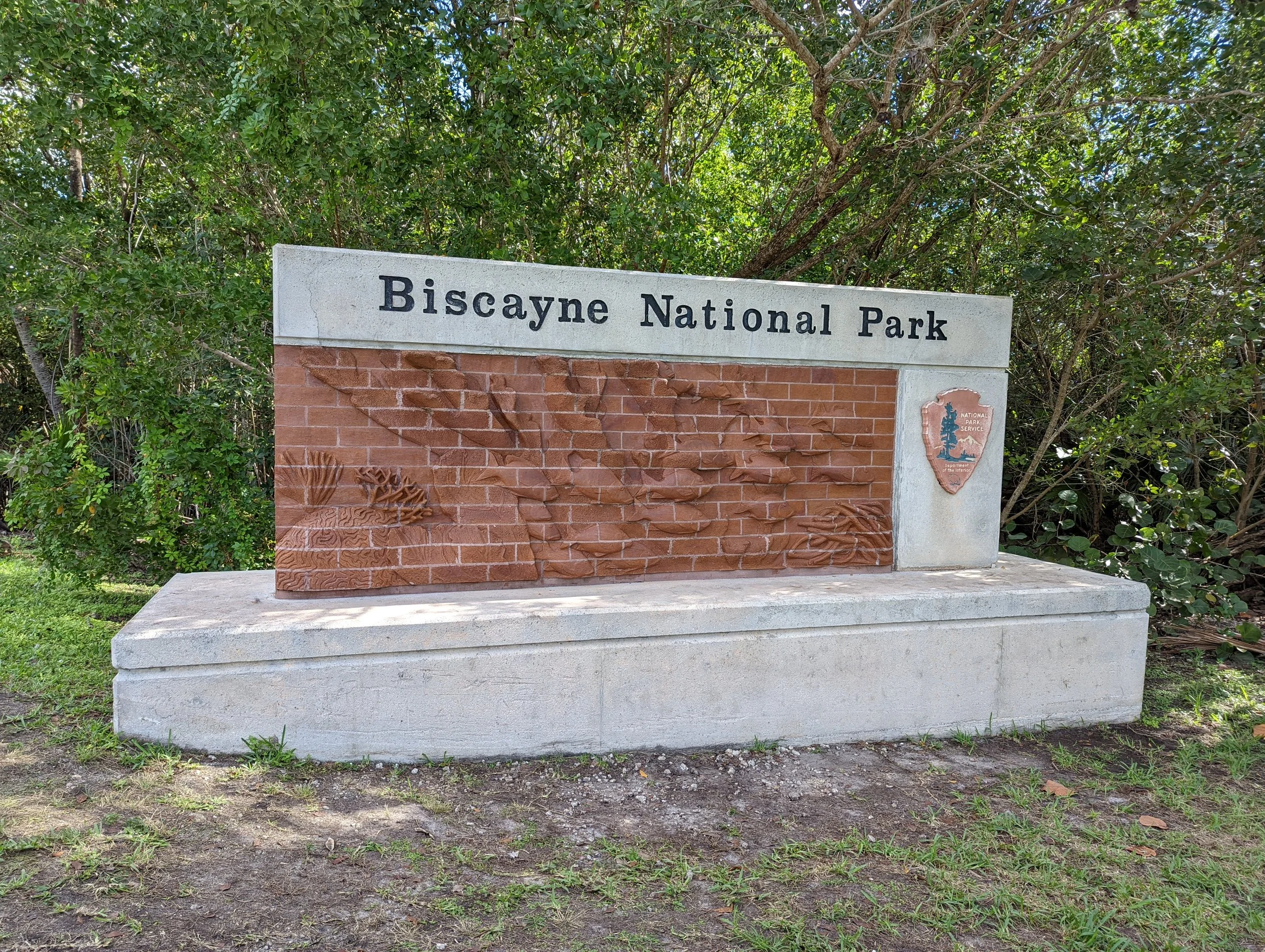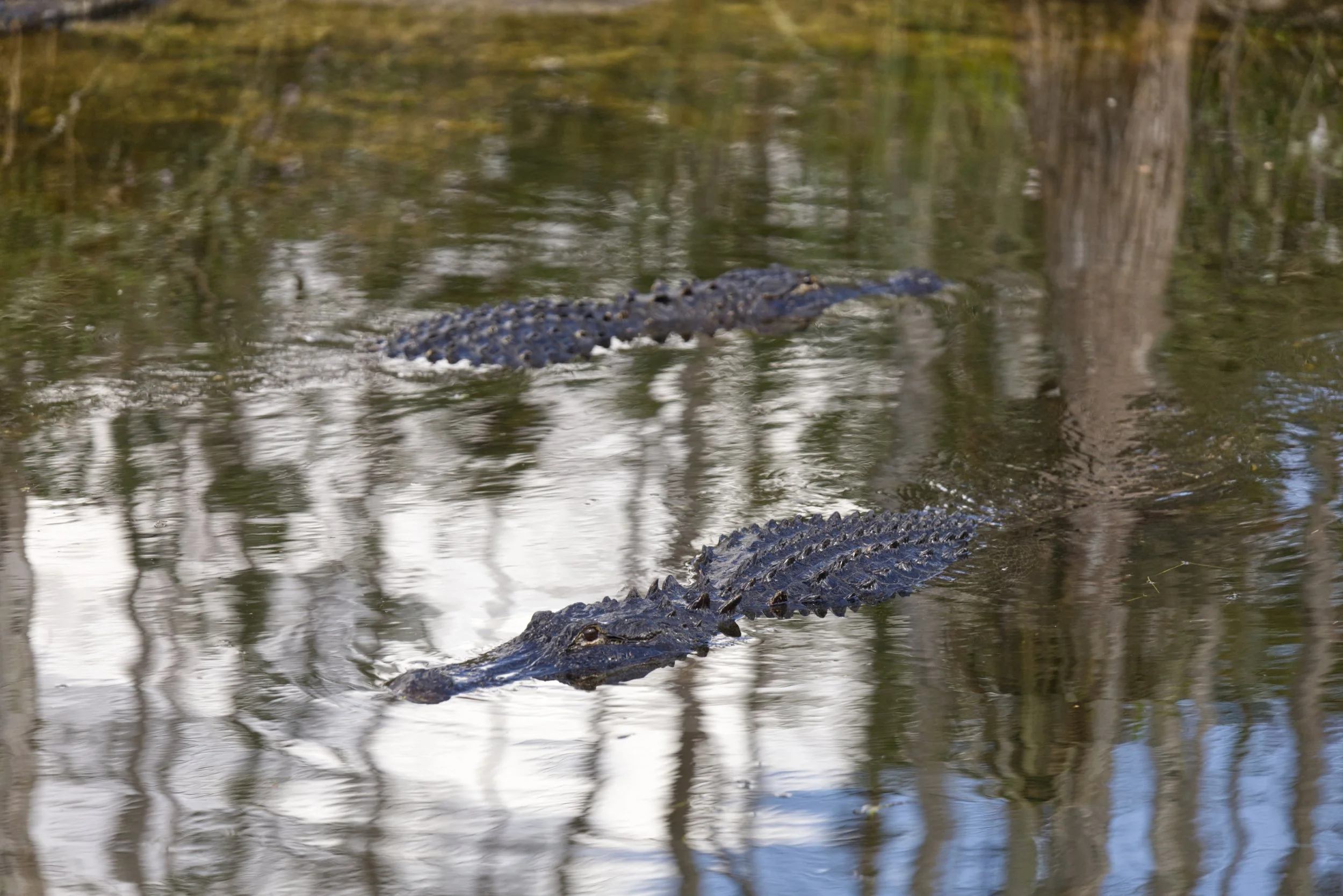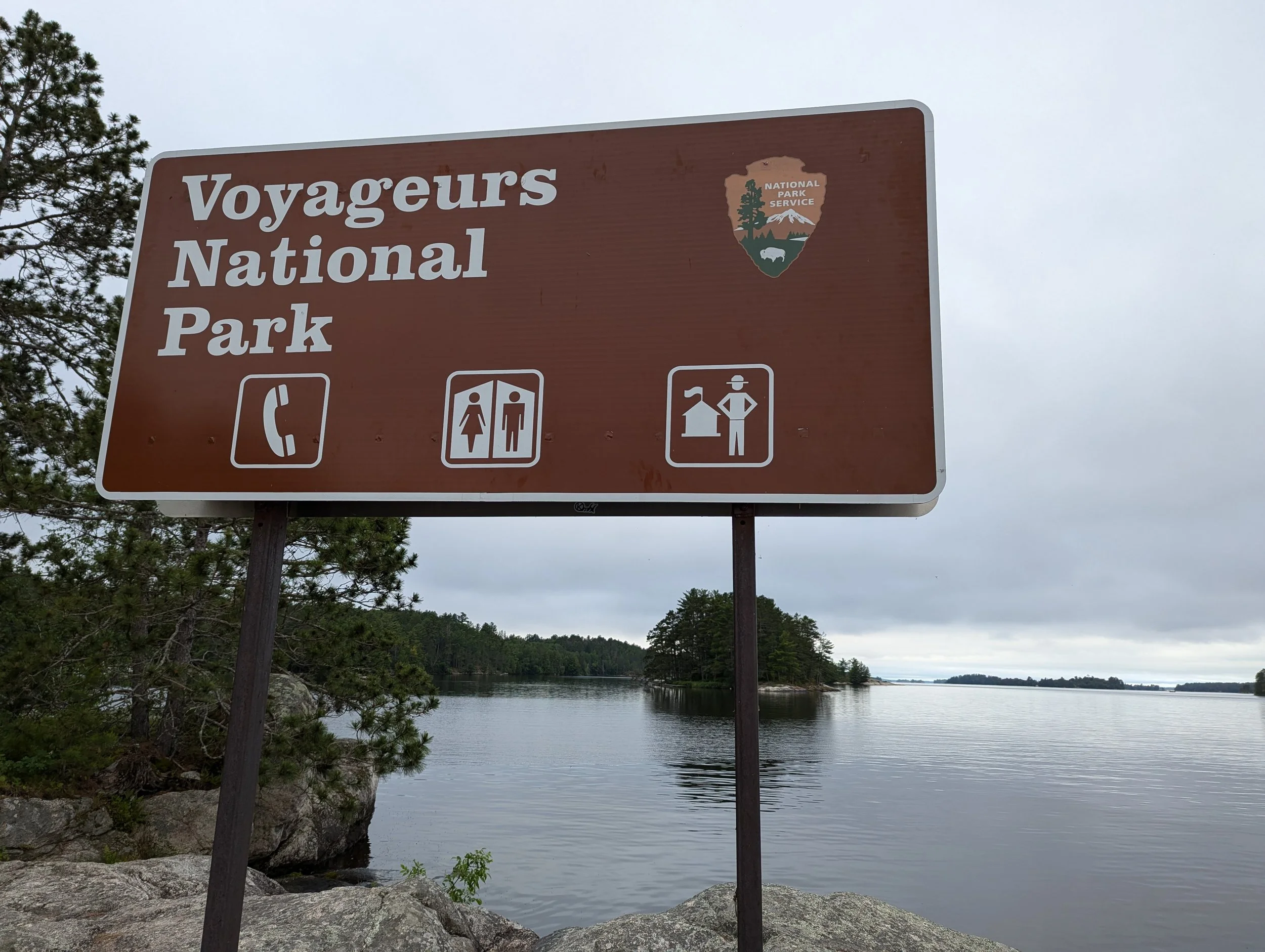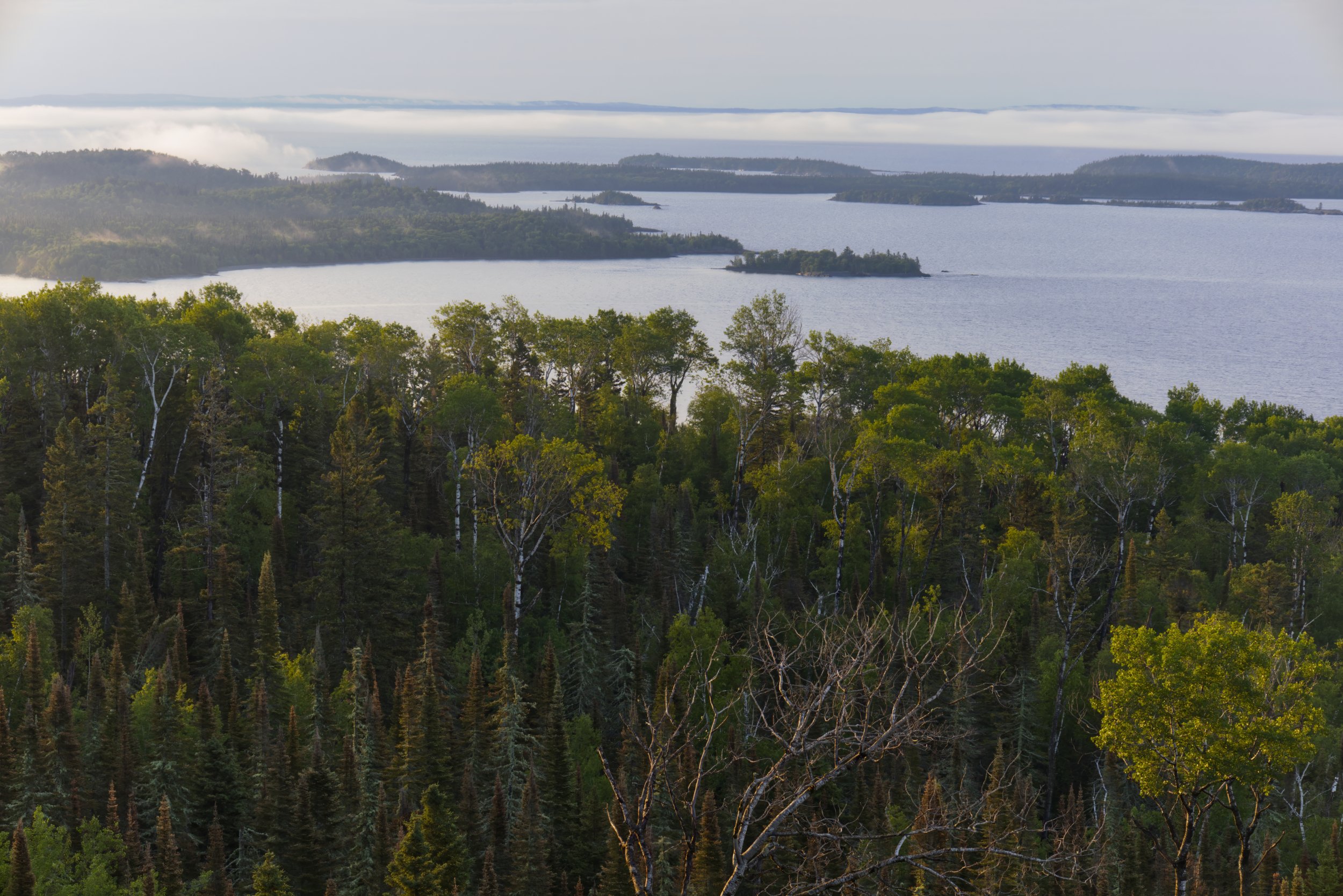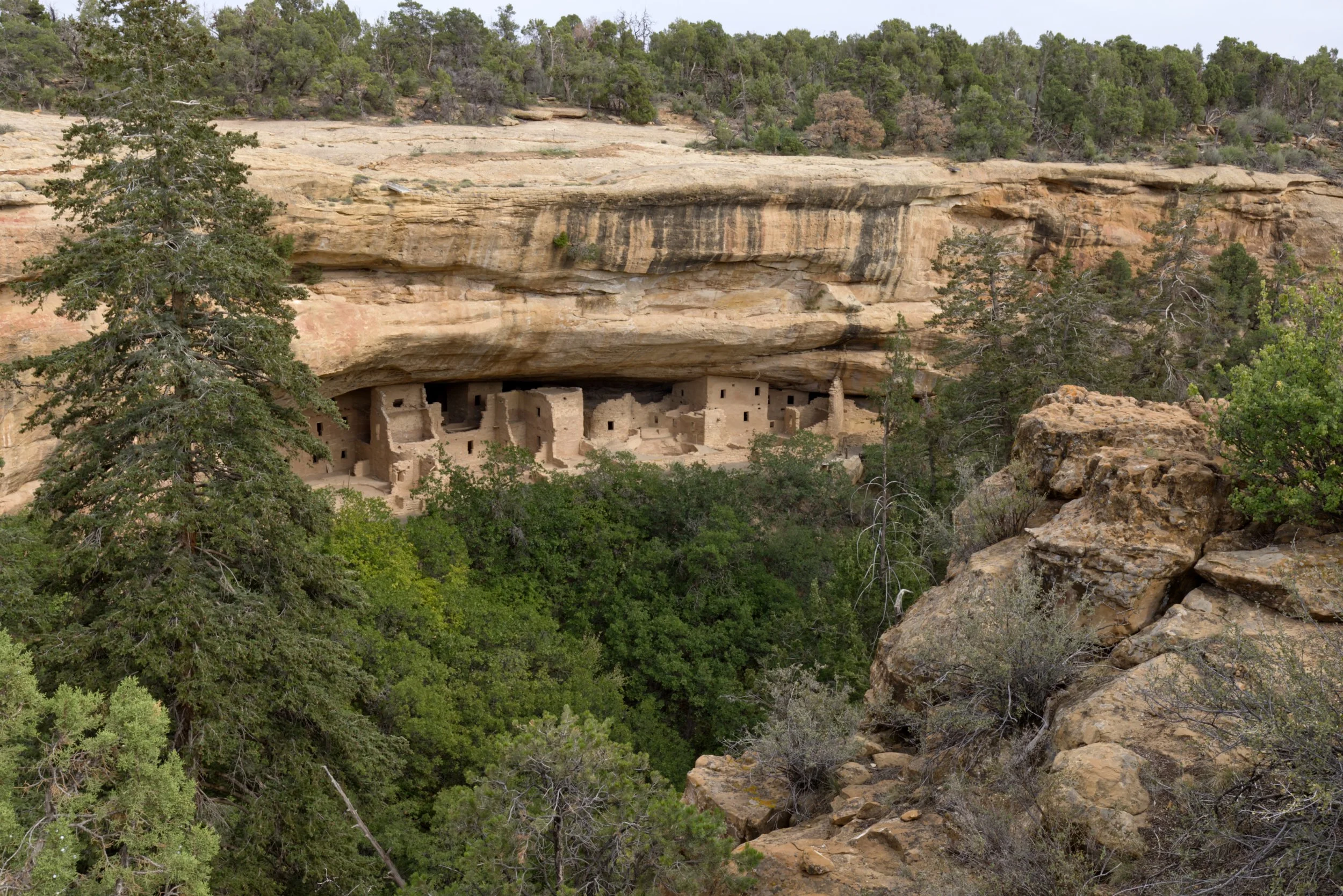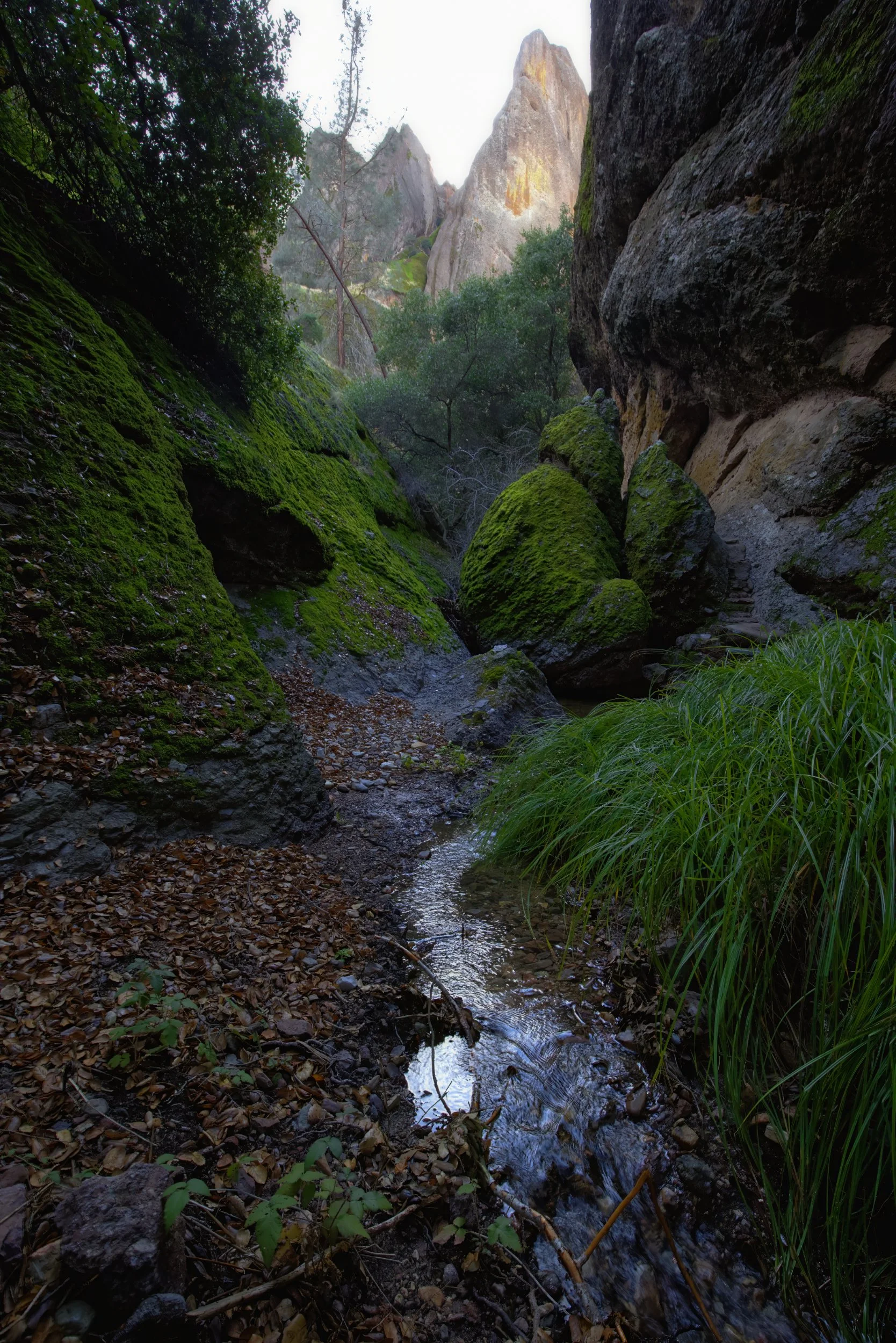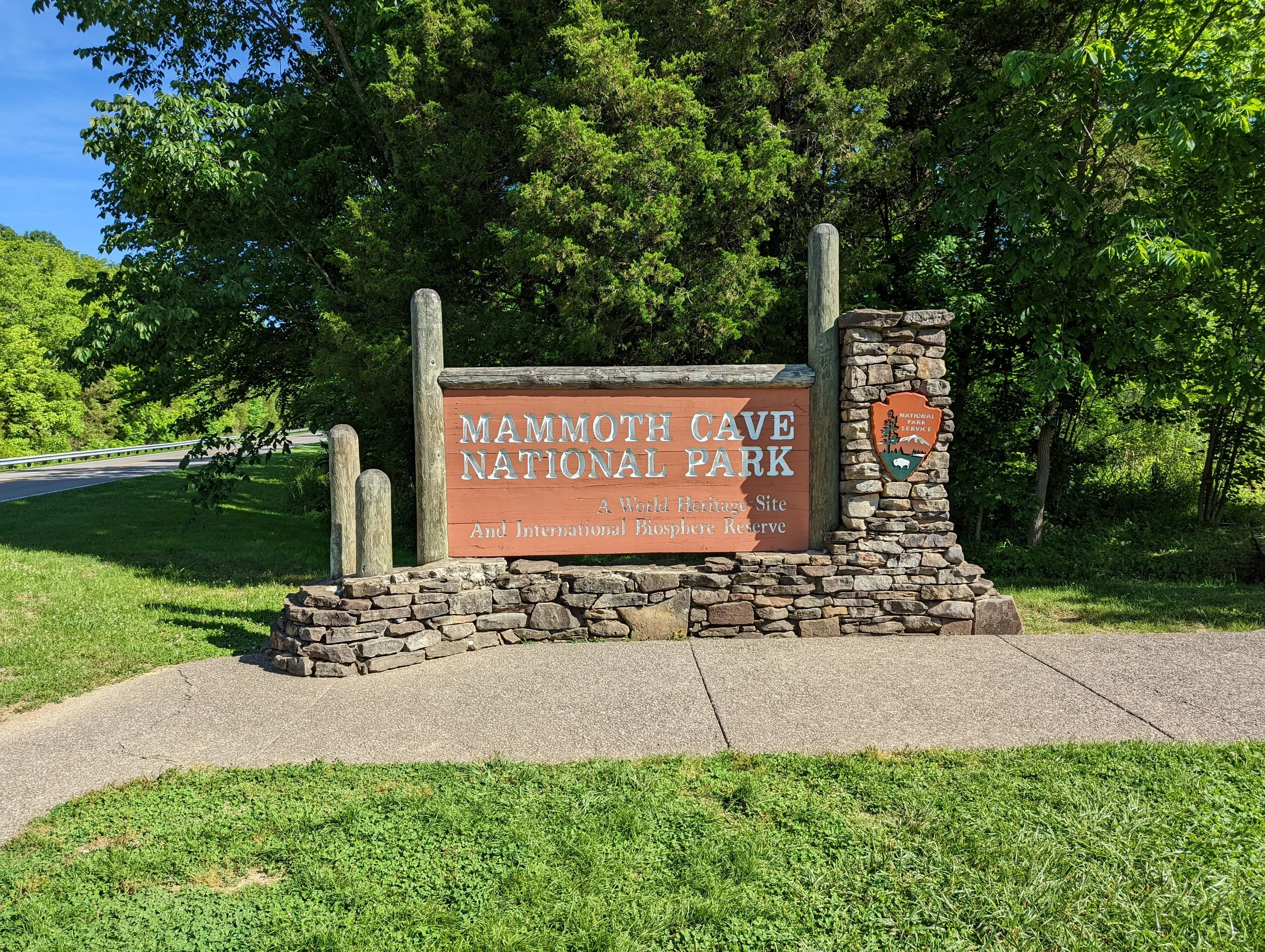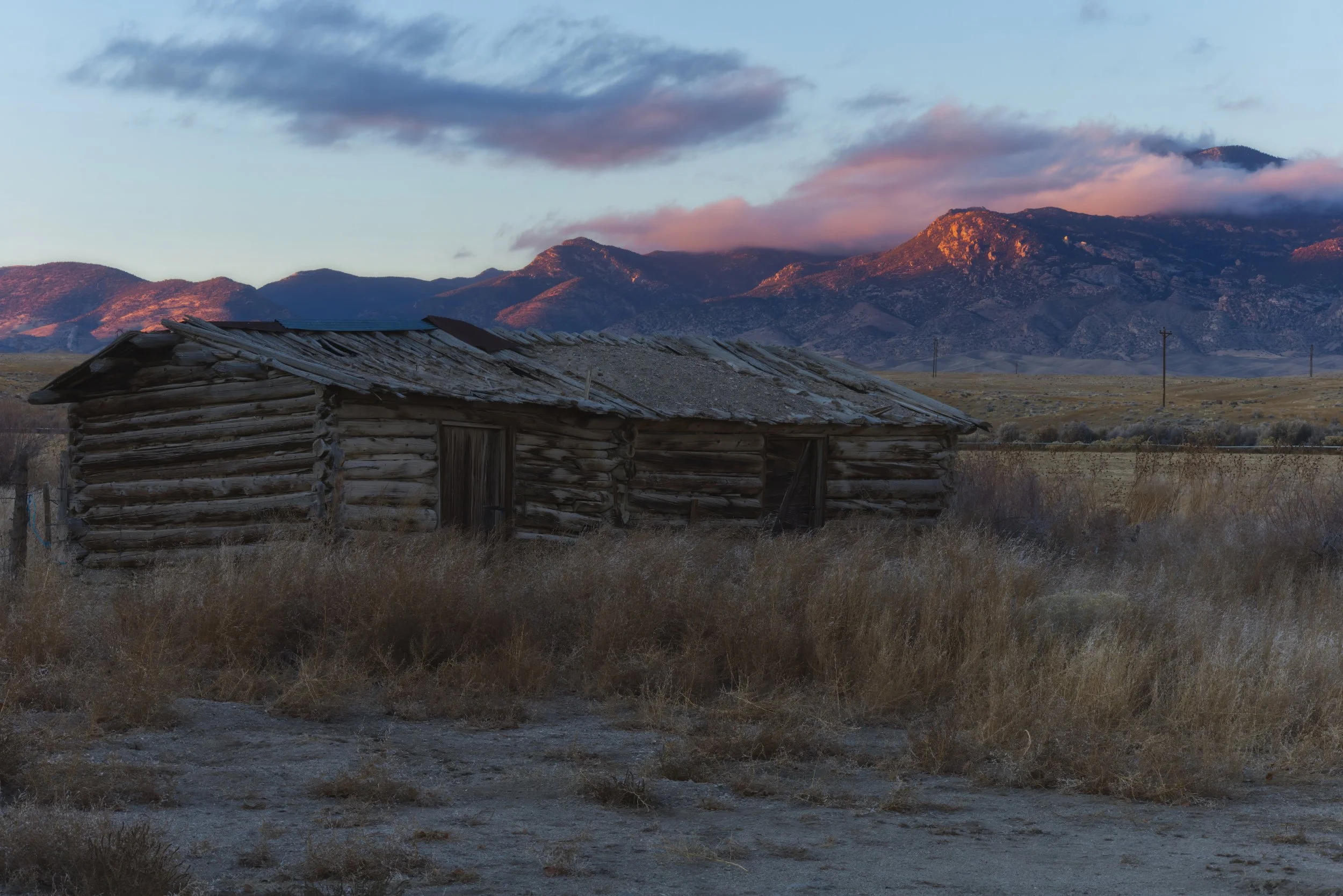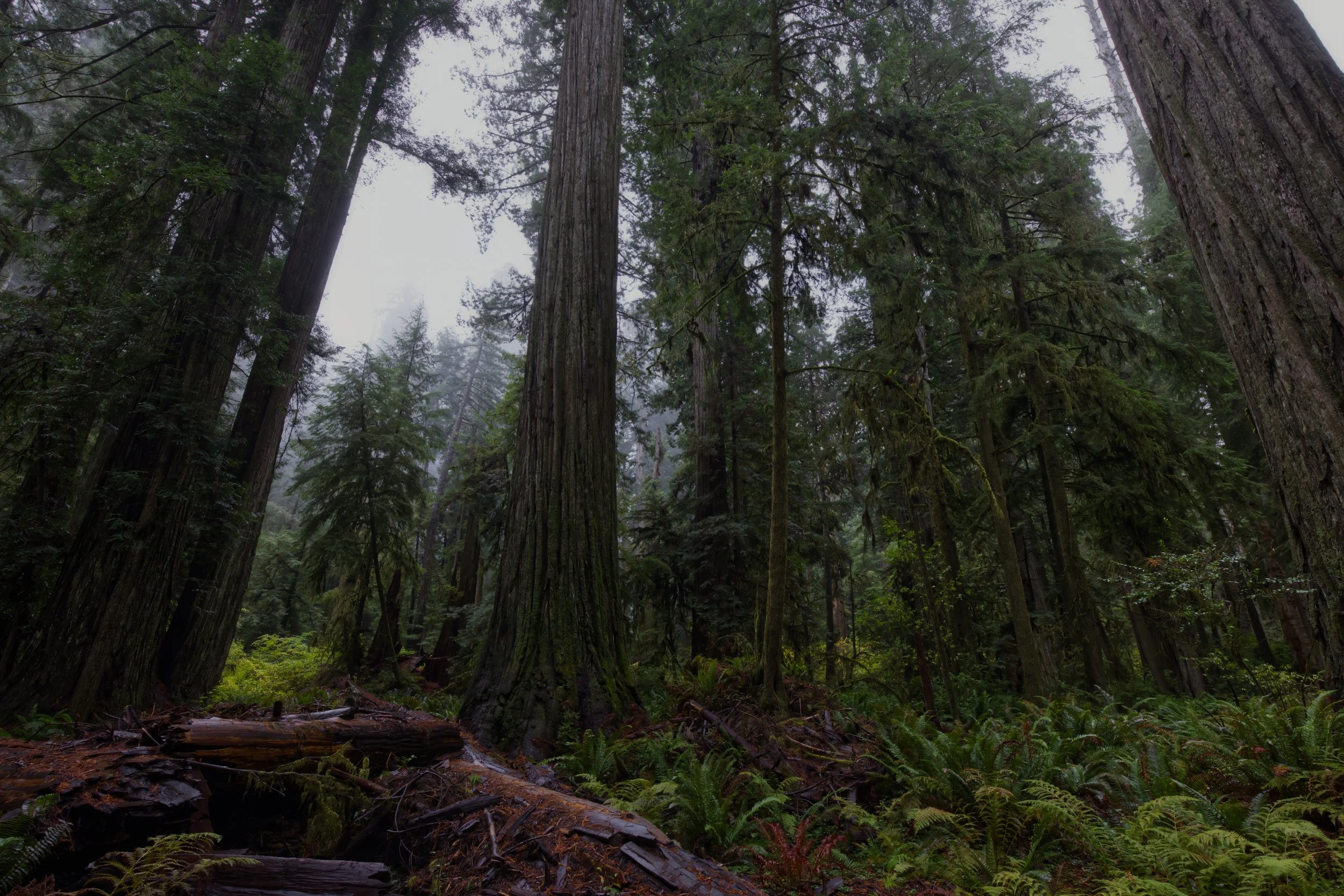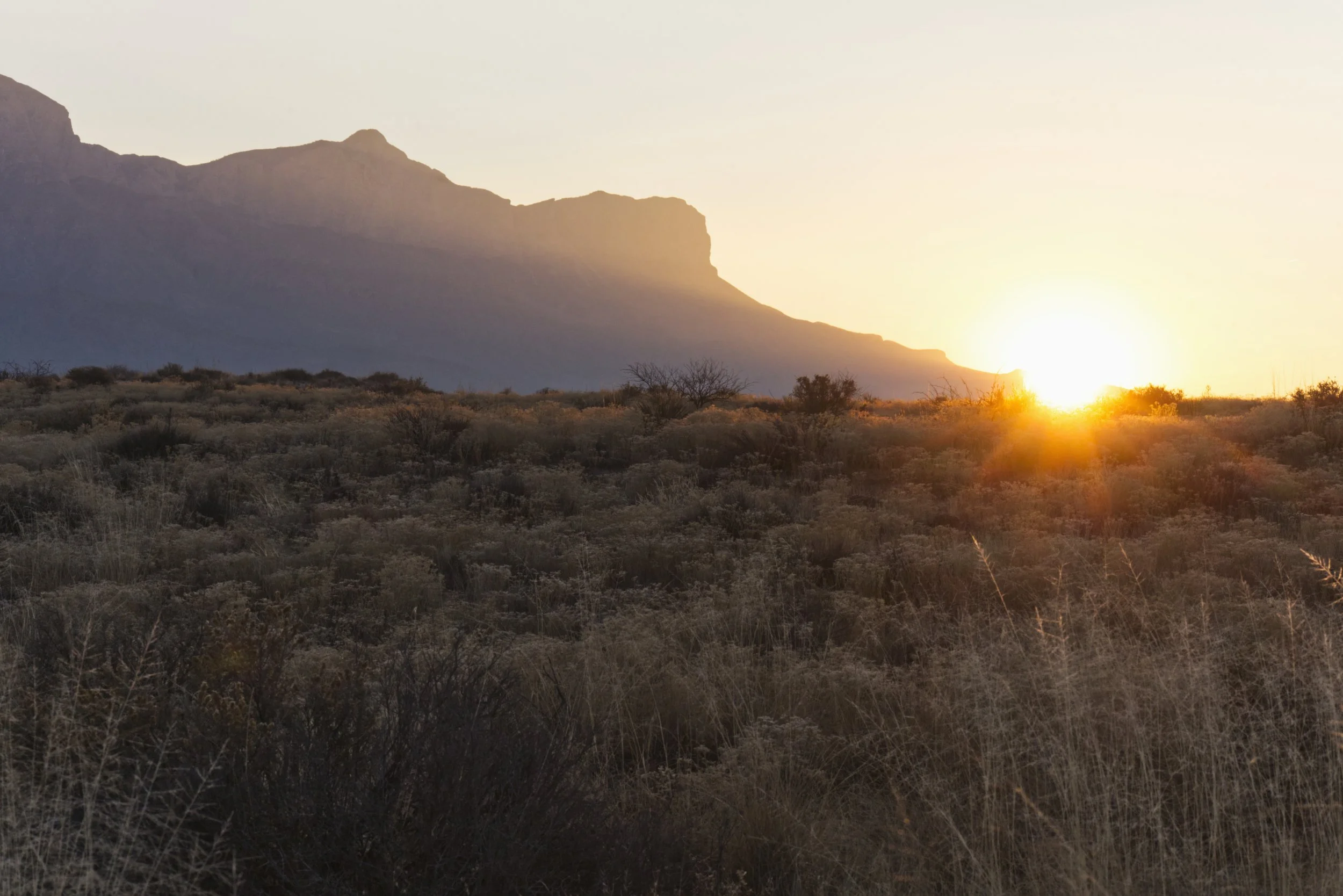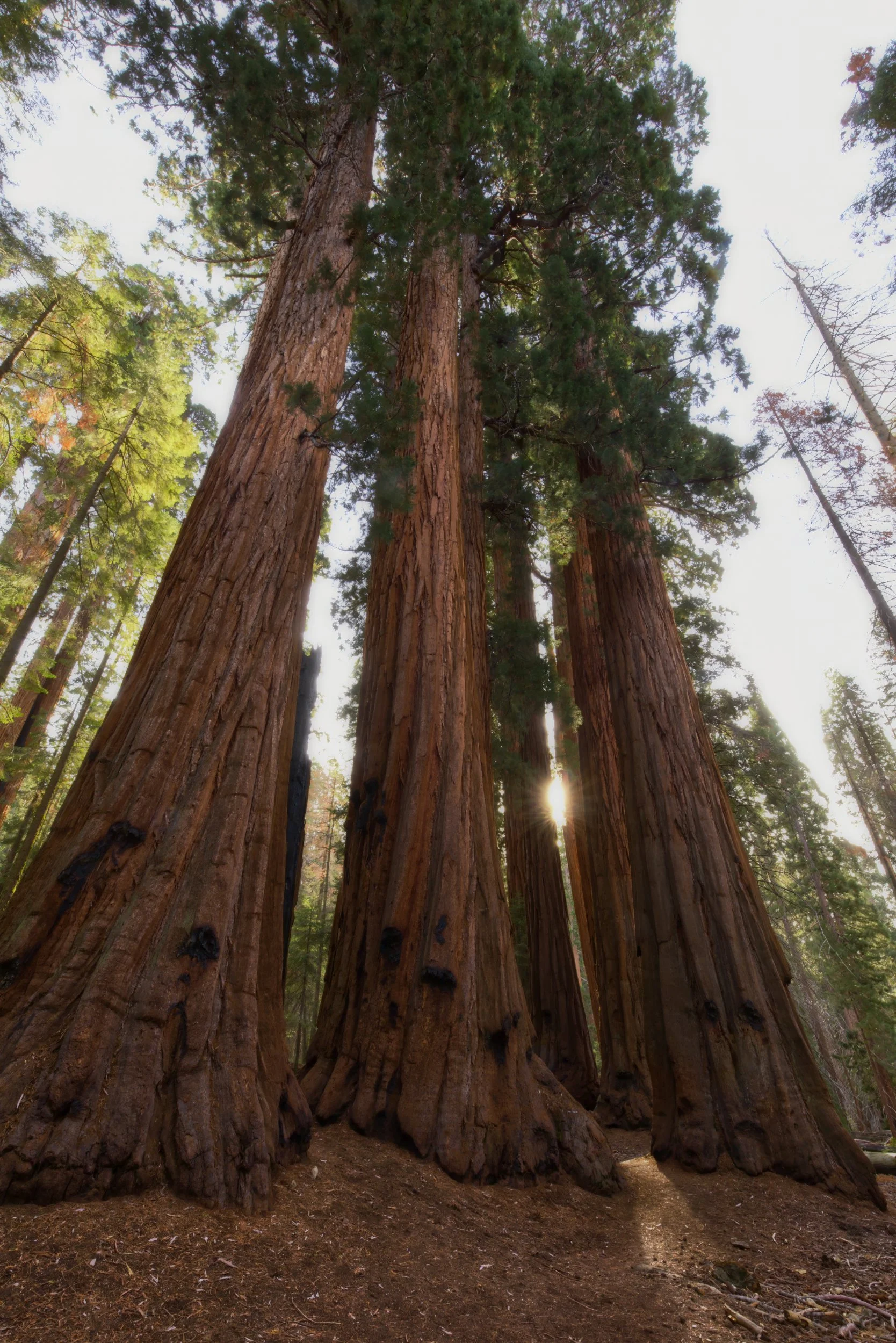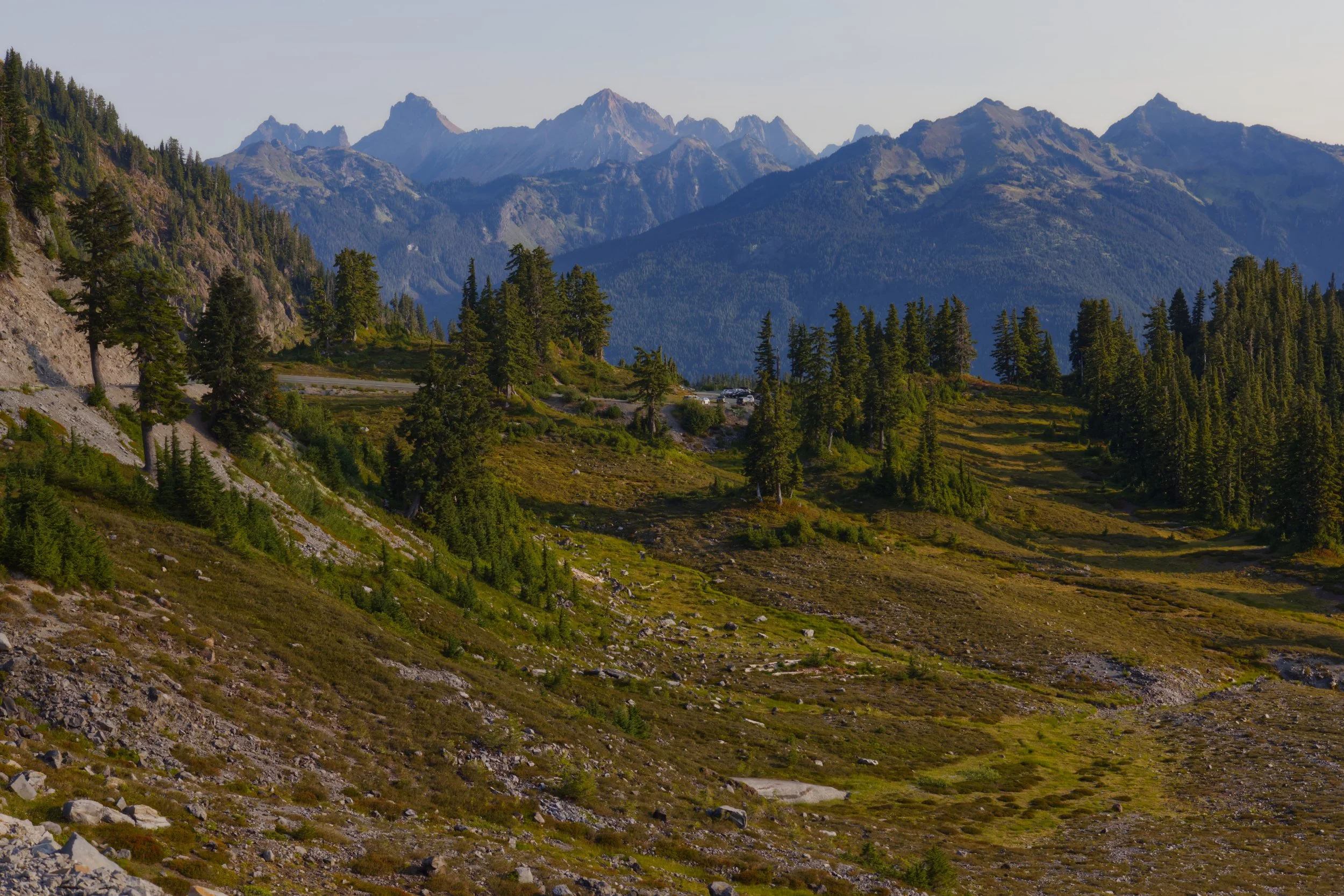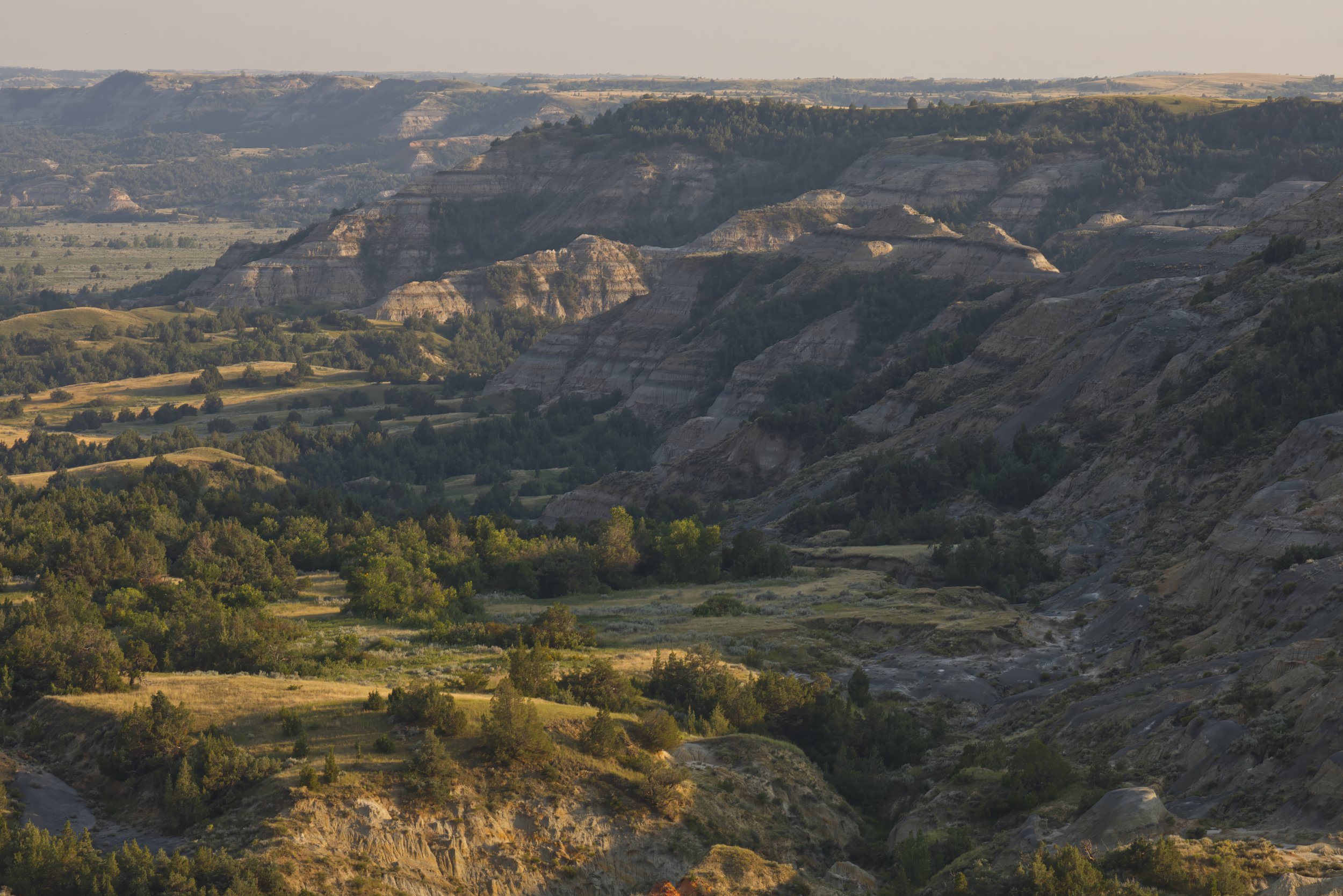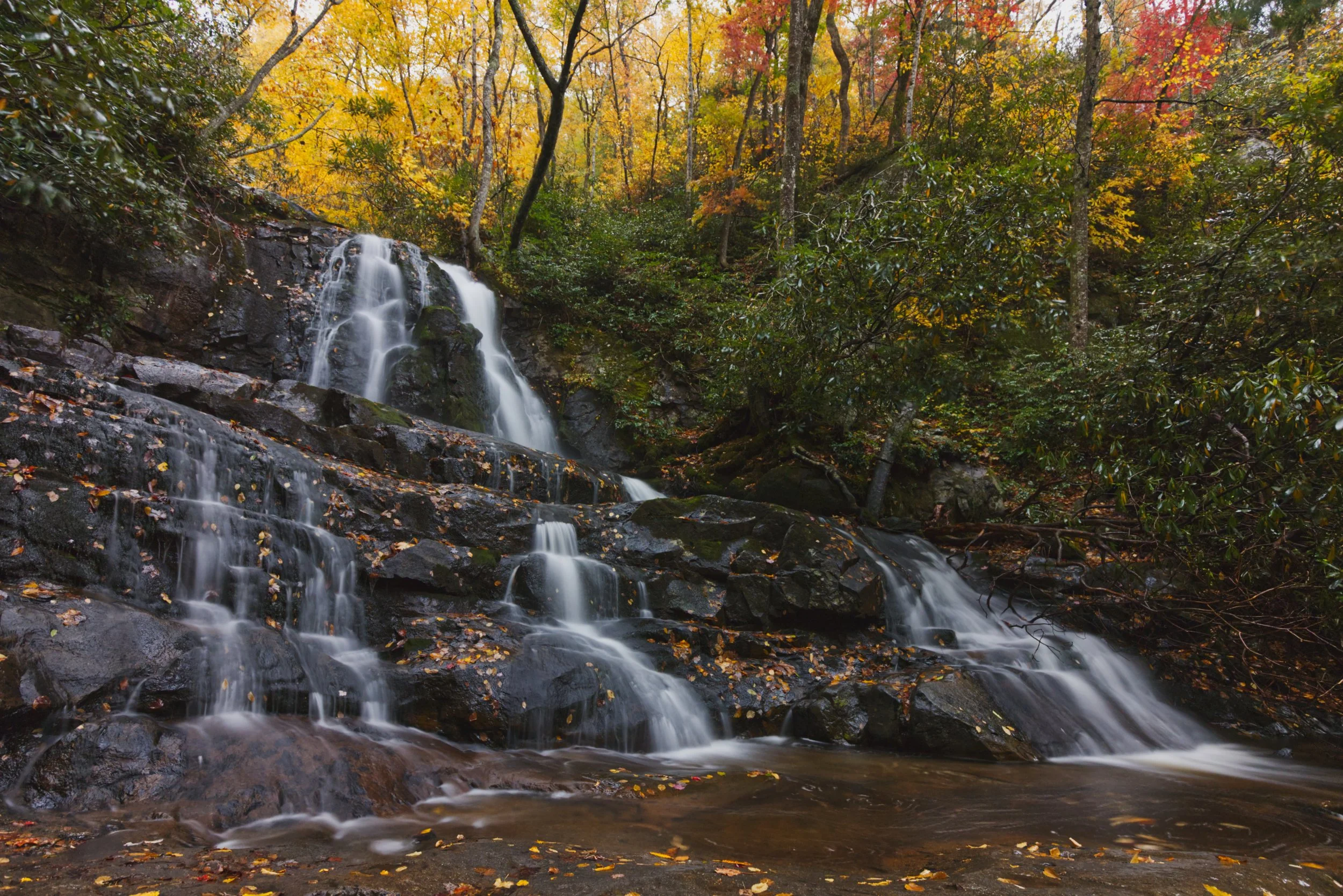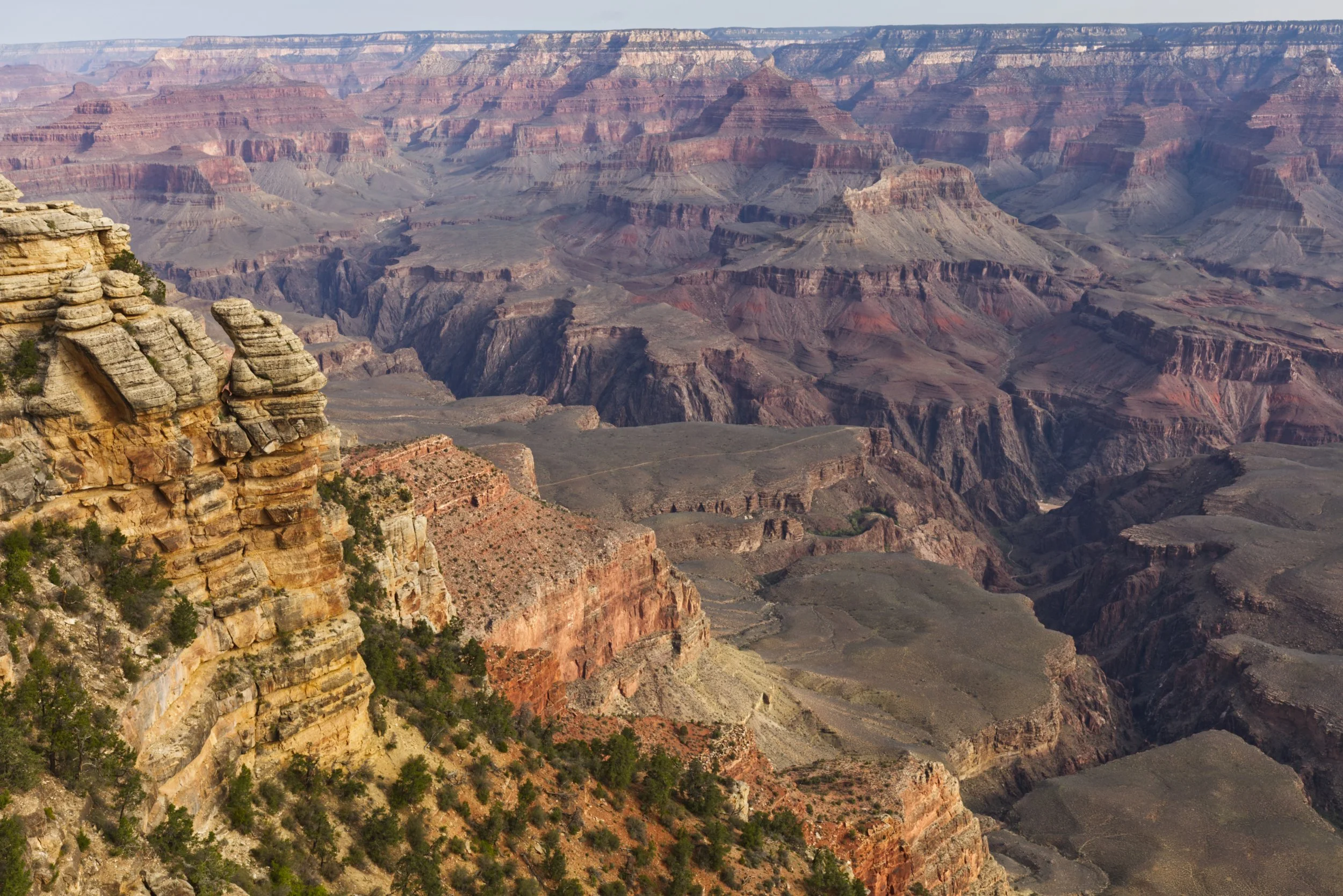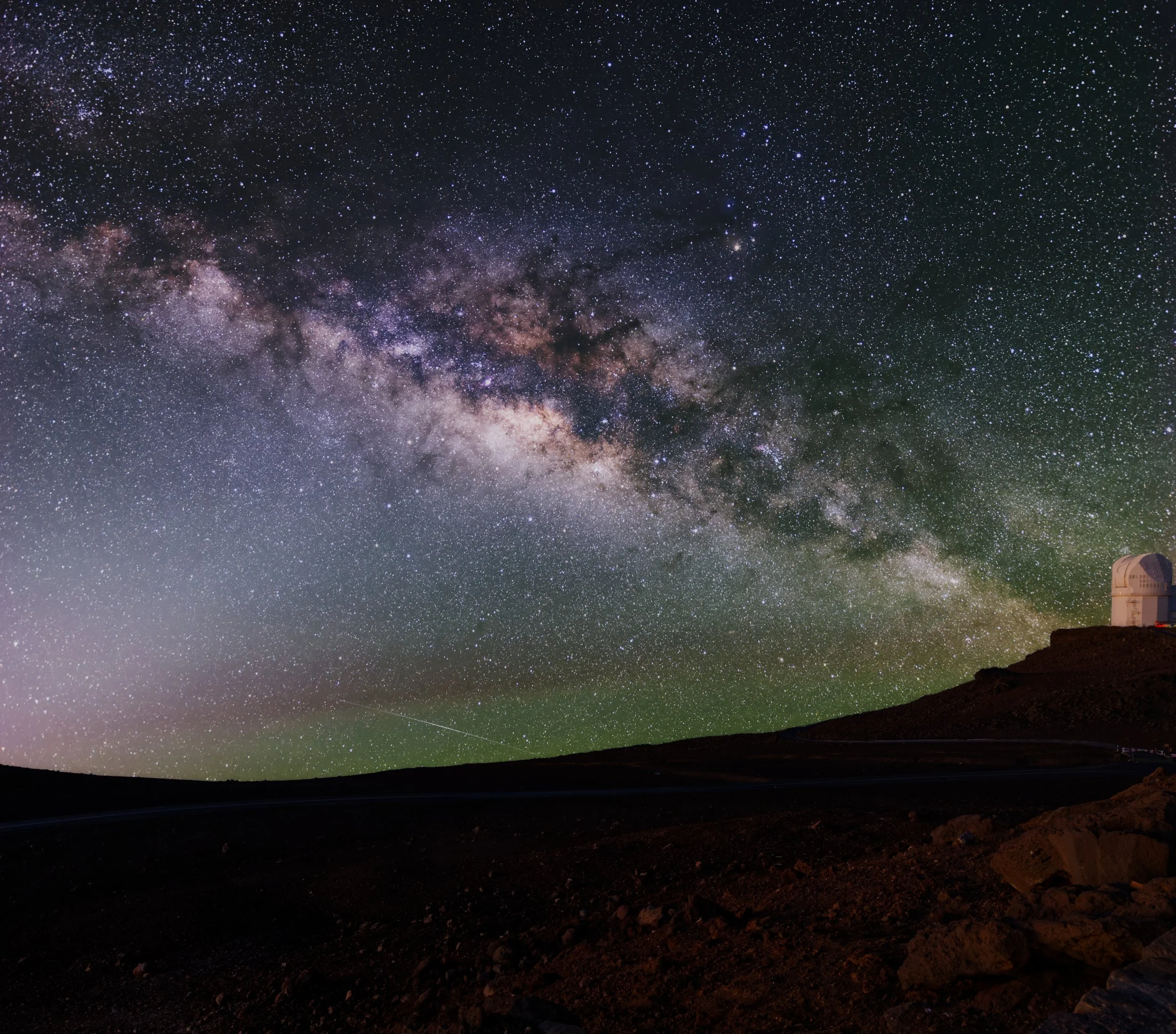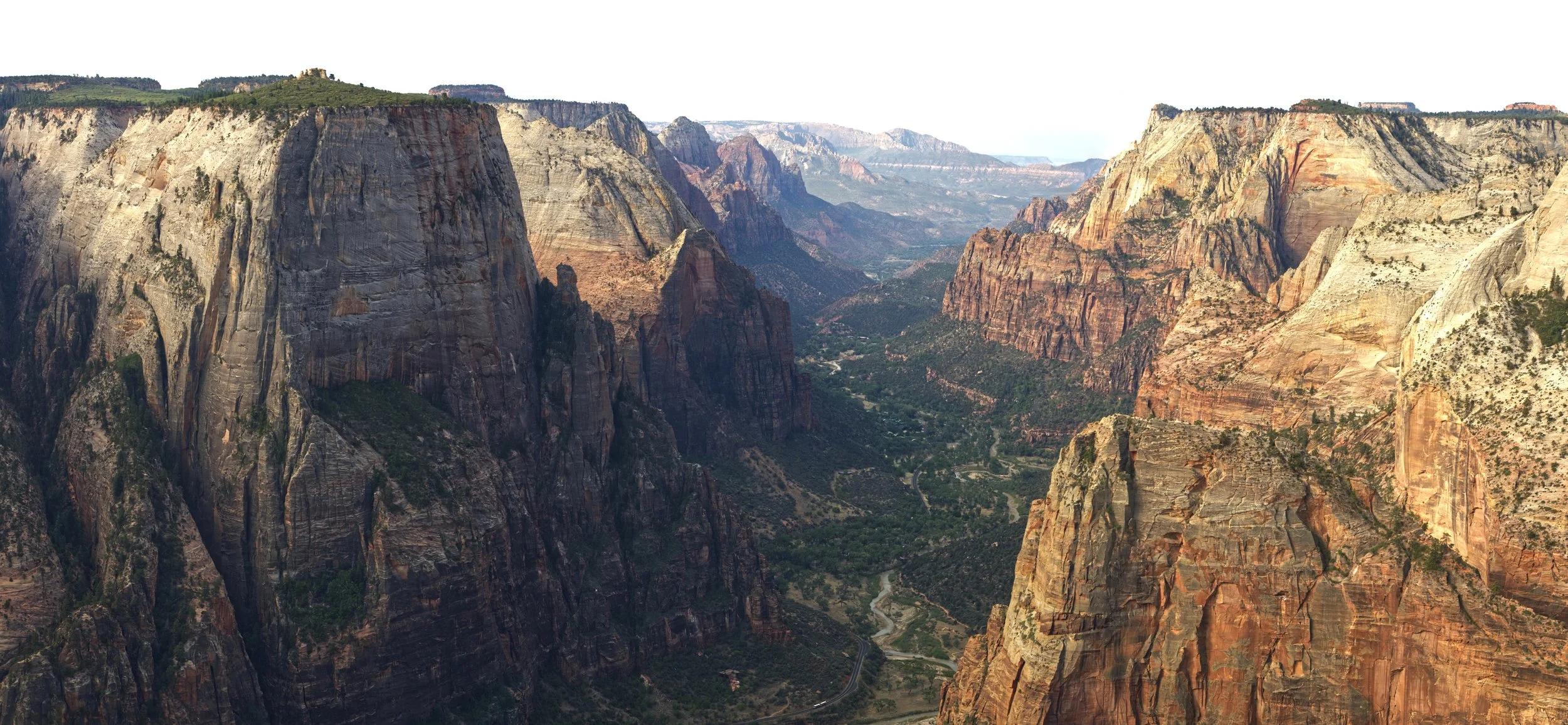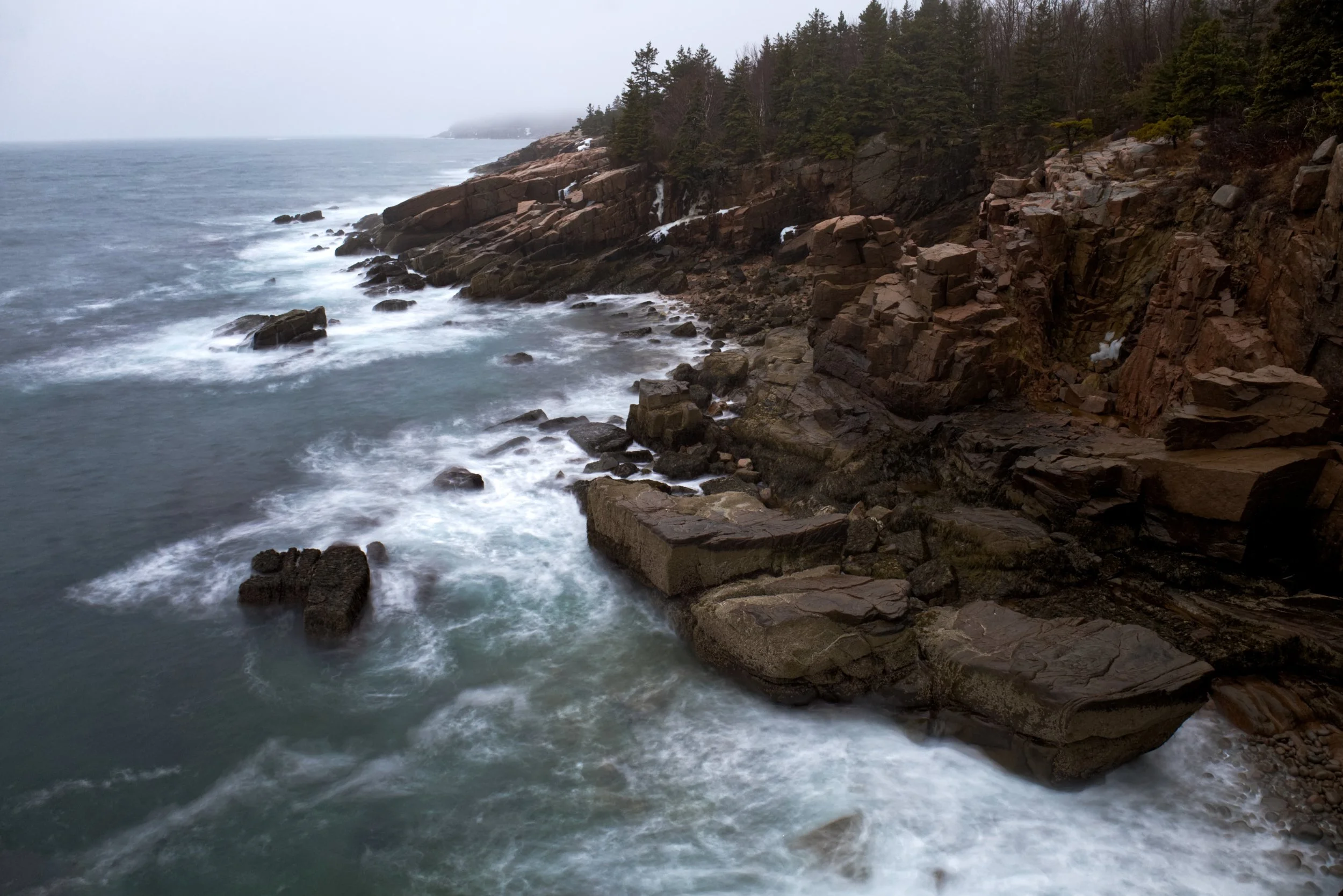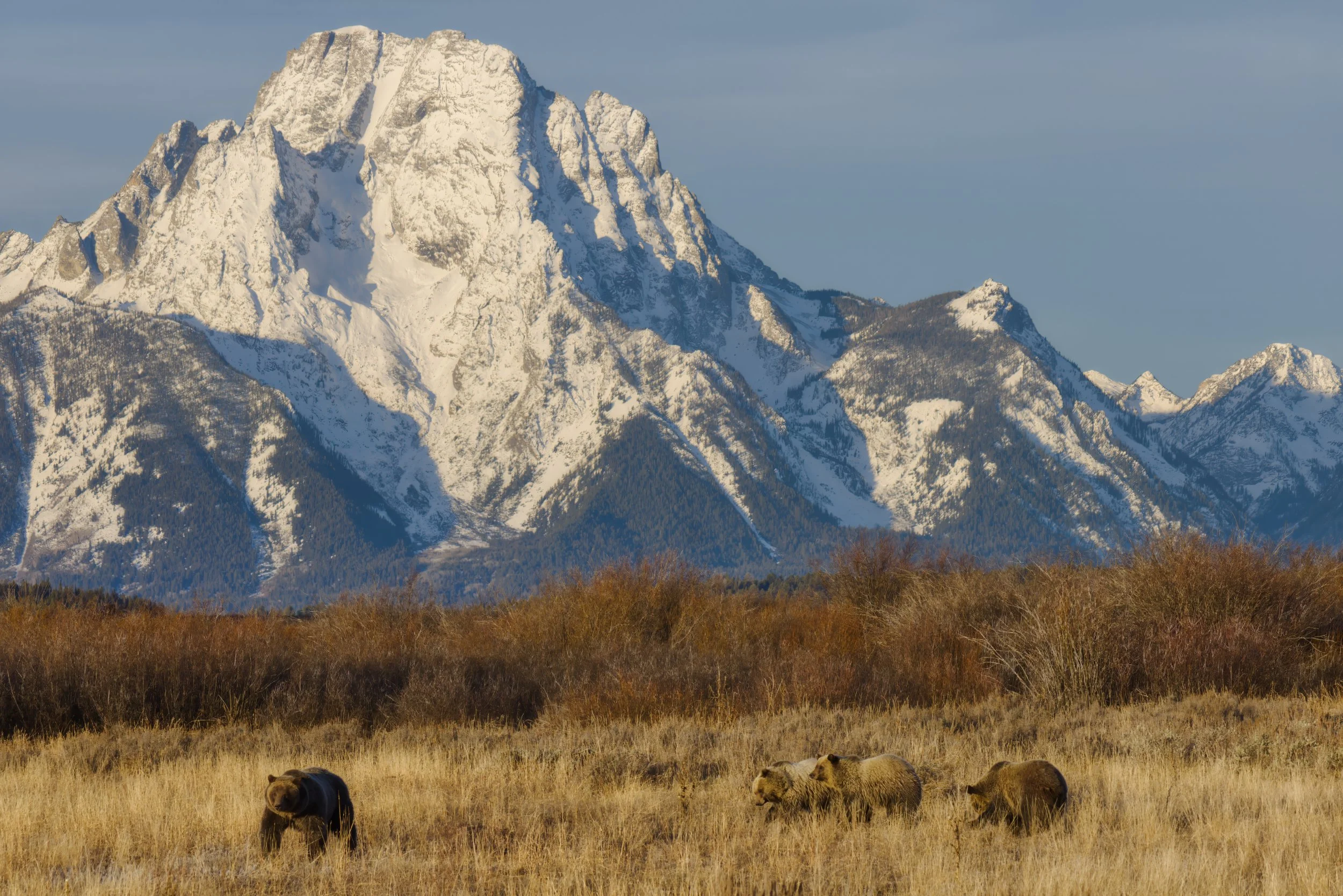Ranking the National Parks
The Ultimate Guide to America’s Wildest Treasures
With 63 official U.S. national parks scattered across deserts, mountains, forests, islands, and volcanoes, the question isn’t if you should visit, but where to start. While every park has something special, some shine brighter based on scenery, uniqueness, hiking, wildlife, and overall experience.
Here’s how I rank the 49 parks that I’ve visited so far — from world-famous icons to hidden gems worth the trek.
The Lower Tier: Urban, Smaller or Less Diverse
49. Gateway Arch National Park, MO
Apparently, one stainless steel fidget toy plopped in downtown St. Louis counts as a national park now. Move over, Grand Canyon. There's a 630-foot metal boomerang to see.
Natural wonders? Wildlife? Hiking trails? LOL. This park is one goose and a patch of lawn away from being just another downtown business park.
Look, it’s cool if you love architecture or you’re really into American expansionism, but calling this a “national park” is like putting ketchup on noodles and calling it pasta.
48. Hot Springs National Park, AR
Want to connect with nature? Too bad — you’ll mostly be walking along sidewalks, passing historic bathhouses that now double as gift shops and quirky museums. It’s less “majestic wilderness” and more “walking tour of 1910 plumbing.” The people you’ll see walking around this historic spa town are more wild than any of the nature you’ll see.
And while we didn’t get to go into any of the bathhouses, I doubt that experience would’ve helped in this spot’s ranking.
47. Indiana Dunes National Park, IN
This is the national park where you can work on your tan, inhale that sweet industrial air, and gaze out over the waters of Lake Michigan, while a freight train rumbles by in the background.
Sure, it’s cool seeing the skyline of Chicago from across the clear blue waters of Lake Michigan. However, the number of people will make this feel more “Beach Day, Midwest Edition” than a national park.
46. Cuyahoga Valley National Park, OH
A patch of greenery near Cleveland. That’s pretty much it. While it’s a good option for locals to get out of the city, there’s really not much more. You go in expecting sweeping vistas and come out with a new appreciation for suburban sprawl and train whistles. The “majestic” Towpath Trail? Nothing screams “wilderness adventure” like walking next to a canal built for 1800s cargo boats. Want solitude in nature? Good luck dodging joggers, cyclists, and that one guy on rollerblades who definitely peaked in 1997.
45. Biscayne National Park, FL
This park may have something to offer if you’re into snorkeling. Half the park's wonders are under water and the other half are... more water. It’s less a national park and more like an overly glorified snorkeling suggestion.
At the end of the day, Biscayne is the perfect park for people who want to experience nature without actually touching land, and for land-lovers, it’s just a very expensive, very sunny disappointment.
44. Everglades National Park, FL
While there is plenty of wildlife and flora diversity in the US’s largest tropical wilderness, it’s more of a bug-infested swamp than enjoyable experience. The park is flat—like painfully flat. If you're looking for elevation change, try jumping off the boardwalk (don’t actually do this).
And let's talk more on wildlife. Yes, you might see a rare bird, a manatee, or even a panther… if you're lucky. But you're more likely to spot tourists regretting their life choices while sweating through every pore. The most reliable animal encounter is the ever-present alligator giving you the “you don't belong here” side-eye.
43. Congaree National Park, SC
The park boasts a “lush floodplain ecosystem” — which is just code for “bring boots, a canoe, and possibly a lifeguard.” And during the summer? Picture a sauna. Now, fill it with bugs the size of drones. That’s Congaree in July.
While we actually had quite the pleasant time here in November, the “Mosquito Meter” at the visitor center was an ominous warning of what this place can be like in the summer months.
42. Shenandoah National Park, VA
Where the mountains are "rolling" and the views are always obscured by a thick layer of humidity. It's the place you go to when you want to pretend you're in the Appalachians, but then realize you’re basically just in the DMV with better Wi-Fi.
We’ve hardly spent any time here, but if you’re looking for majestic mountain scenery, you’d be better of going elsewhere in Appalachia.
41. Wind Cave National Park, SD
You’d think a place called “Wind Cave” would have epic, howling caverns of doom — instead, it’s basically an underground maze of humid rock hallways. “Boxwork formations”? Could be cool, if the park elevator is ever working to actually take you into the cave.
Above ground, it’s mostly prairie. Like, a lot of prairie. The kind of endless grassland where the biggest thrill is hoping you don’t get judged by a bison while you pretend to enjoy the scenery. The nearby Custer State Park is a much more enjoyable, scenic, and adventurous spot for anyone visiting South Dakota. Still, if you want to say you’ve visited a national park without the hassle of crowds or expectations, Wind Cave’s got you covered.
40. New River Gorge National Park, WV
We honestly didn’t have much time here, as it was quickly getting dark. There may be lots to see and do, but it’s one of those parks that’s quiet, a little underwhelming, and just far enough away from major cities that you can tell people you “got away” without actually going anywhere.
The Mid Tier: Rugged, Remote, & Solitude
39. Petrified Forest National Park, AZ
A bit in the middle of nowhere, but that’s part of the appeal. Badlands, painted deserts, and the main attraction - petrified wood. Yeah, it may seem like “just rocks,” but when you think about it, these are ancient trees, preserved for over 200 million years, offering you a direct link to a world that existed long before humans.
And, unlike more “in-your-face” parks, there’s a rare sense of solitude. No massive crowds here — it’s a peaceful place to connect with nature in its truest form. Whether it’s the quiet stillness of the desert or the soft whisper of the wind through the ancient wood, this park allows you to slow down and appreciate time in a way that few places can.
38. Voyageurs National Park
The name "Voyageurs" makes it sound like a romantic expedition, but really it’s just code for “you’ll be swatting bugs while your overpriced rented kayak (if there are even any available) drifts into the wilderness.”
Our experience was just that: swatting the thousands of mosquitos swarming us in June and unable to get on a tour or boat on the water. The photo was hastily taken while I dodged a cloud of mosquitos. Regardless, Voyageurs National Park is renowned for its dark skies, making it an excellent spot for stargazing and seeing the northern lights. Plus, this region in fall is known for it’s splendid foliage. It’s one of those places where we’ll be back in fall or winter, when the mosquitos aren’t hungry.
37. Hawai’i Volcanoes National Park, HI
Hawai‘i Volcanoes National Park isn’t just about seeing nature — it’s about experiencing it in its most dramatic, transformative form. It’s one of the few places on Earth where you can witness nature’s creativity and power on such an intense scale, all while standing on land that is still in the process of being made.
However, when we visited, it was less about lava flowing and more spending time staring at smoke rising from a hole in the ground. Yes, it’s definitely cool, but absent the lava spewing from the Earth, a bit boring after awhile.
36. Isle Royale National Park, MI
Getting to Isle Royale? It’s like trying to visit an abandoned island… because it kind of is. You have to take a ferry, a seaplane, or a really committed kayak ride just to get there. It’s almost like the park is saying, "We don’t want you here. Go away." Especially when you consider tickets for the ferries or seaplanes sell out months in advance.
We never actually made it onto the island, as we couldn’t get a spot on one of the coveted ferries or planes. We did manage to stand within the park’s boundaries in Houghton, MI. And we saw the island in the distance from Minnesota’s North Shore. It still appears to be an adventure of a lifetime, however elusive.
35. Joshua Tree National Park, CA
Joshua Tree, the desert Disneyland for Instagram hikers and people who think cacti are “aesthetic.” All jokes aside, the business of the parks stems from its proximity to Southern California, but the park isn’t just “a bunch of weird trees in the desert.” It’s an otherworldly landscape carved by time, wind, and volcanic history — a true meeting point between two distinct desert ecosystems: the Mojave and the Colorado. It’s where boulders the size of houses casually sit under skies that look like NASA painted them, and where time slows down in the best way.
It’s hot, it’s dry, and it’s unforgiving. It’s supposed to be that way, but the amount of people that frequent here truly detracts from something special.
34. White Sands National Park, NM
At first glance, it looks like snow in the desert — but this isn’t snow. It’s gypsum, the kind of white sand so fine it squeaks under your feet like fresh powder. This place is unique — not “kind of rare” or “unusual for the region,” but one of a kind on the entire planet. It’s the world’s largest gypsum dune field, and it’s nothing short of surreal.
White Sands doesn’t shout at you — it stuns you with simplicity. It’s the kind of beauty that sneaks up on you: blinding white dunes under deep blue skies, glowing pink at sunset, and silver in the moonlight. The only problem? The park has open and closed hours, so those dreams of sunrise, sunset, and sitting under the stars require a permit.
33. Mesa Verde National Park, CO
This isn’t just another “pretty place.” Mesa Verde is one of the most important archaeological sites in North America, preserving the legacy of the Ancestral Puebloans — a civilization that built intricate cliff dwellings, kivas, and entire communities into the sides of canyon walls... by hand. Before power tools. Before roads. Before European contact. It's not just awe-inspiring — it's humbling.
Sweeping mesas, canyons that stretch for miles, and rock formations sculpted by eons of wind and time. But what makes Mesa Verde truly special is that it’s not about the scenery alone — it’s about story. These aren't ruins. They're homes. Places where people raised children, gathered for ceremonies, farmed the land, and innovated with engineering and architecture that still baffles modern minds.
32. Pinnacles National Park, CA
Tucked into central California, Pinnacles isn’t trying to be Yosemite. It doesn’t have to. What it does have is a landscape forged by fire — ancient volcanic activity twisted and shattered the land into towering spires, caves, and cliffs. This isn’t just a hike — it’s a walk through geologic drama.
And those caves? Not your average tourist stop. These are pitch-black, flashlight-in-your-mouth, Indiana Jones-style talus caves. Formed from massive boulders wedged into canyons, they’re fun, mysterious, and just a little spooky — in the best way.
People sleep on Pinnacles because it’s small and lesser-known. Good. Let them.
31. Kings Canyon National Park, CA
You want real adventure? Kings Canyon delivers. It’s got one of the deepest canyons in North America — deeper than the Grand Canyon in places — but it doesn’t need to scream about it. It’s not flashy. It’s not commercial. It’s just epic, quietly.
And sure, it’s attached to Sequoia National Park. But don’t confuse that with being second-rate. That’s just efficiency. Two parks, one trip — twice the beauty, half the hassle. Kings Canyon is the high-alpine yin to Sequoia’s towering-tree yang.
The only downside? The vast majority of the park (particularly the whole canyon portion) is closed during winter, hence its lower spot on this list.
30. Mammoth Cave National Park, KY
With over 400 miles of explored passageways, it’s the longest cave system in the entire world. It’s difficult to immerse yourself in the true scale of this place, with its dark, carved out tunnels and grand rooms. And at a constant temperature of 54 degrees year-round, make sure you have a light jacket.
All access to the cave is limited by ranger-led tours, which may sell out in advance. But because of that, every tour is tailored — from kid-friendly strolls to heart-pounding crawls through tight chambers. Want a calm walk with cool rock stories (what we did)? There’s a tour. Want to crawl on your stomach through pitch-black passages and confront your inner fears? There’s also a tour. It’s like a choose-your-own-adventure book — but carved into the Earth.
29. Great Basin National Park, NV
Great Basin is for people who actually love nature, not just the T-shirts. It’s peaceful, vast, and rugged in all the best ways. There are caverns that are like like walking into a crystal cathedral sculpted by nature on a cosmic time scale. There’s 13,000 foot alpine mountains, some of the tallest in the State, rising straight out of the surrounding desert. Immaculate dark skies where stargazing doesn’t feel like looking up — it feels like falling into the universe. And then there are the bristlecone pines — the oldest living things on Earth.
The only downside? Most of the park is closed in the winter months, meaning the road up to Wheeler Peak and those ancient pines is closed most of the year.
28. Redwoods State and National Parks, CA
These aren't just tall trees. They’re living skyscrapers forged in silence and fog, towering up to 380 feet — taller than the Statue of Liberty, the U.S. Capitol, and basically your ego after hiking 10 feet into the forest thinking you're outdoorsy.
Walking into a redwood grove isn’t like entering a forest — it’s like stepping into a cathedral built by time itself. The air is hushed. The light filters in like it’s been personally blessed. The strange thing is the park is broken up into different disconnected segments, making it difficult to see everything in one trip.
27. Carlsbad Caverns National Park, NM
This place isn’t a cave. It’s The Cave. The main chamber alone — the Big Room — is over 8 acres wide, with ceilings higher than a football field is long. You could park a small fleet of blimps in there. Instead, you get soda straws, draperies, stalagmites, stalactites, and formations so wild they look photoshopped.
The best part? You don’t need to be a hardcore spelunker. Carlsbad Caverns is accessible, welcoming, and beautifully lit. You can take a self-guided stroll through the Big Room, no ranger-led tour required. It’s New Mexico at its finest — dark skies, a quiet desert, and the kind of distant stillness that makes your phone’s notifications feel like a distant memory. Easily the best of the cave parks.
26. Mt. Rainier National Park, WA
They say the area around the mountain is called Paradise, but let’s be honest: it’s only a paradise if your idea of bliss is fighting for a parking spot like it’s Black Friday at Walmart. You’ll spend more time idling behind rental SUVs and selfie sticks than actually admiring the mountain itself.
The “trail experience” is basically a conga line of confused tourists in brand-new hiking boots, all pretending to be outdoorsy while complaining about cell service. And if the crowds don’t get you, the construction zones will - nothing says “national park escape” quite like the sweet aroma of hot asphalt and the soothing backup beep of a bulldozer.
There are definitely great trails here, and the mountain itself is quite impressive, but it simply wasn’t the natural wonderland John Muir and the influencers claimed it to be. Instead, it’s more of a Purgatory than Paradise.
25. Black Canyon of the Gunnison National Park, CO
Carved by the Gunnison River over millions of years, the canyon’s steep, dark cliffs drop 2,000 feet into a dramatic, narrow gorge. This isn’t your average “photo op” park. This is the kind of place where you feel small in the most humbling, awe-inspiring way possible.
It’s intense, it’s wild, and it’s the perfect place for anyone who’s tired of the Instagrammed-out, overcrowded parks and just wants something that hits harder — an experience you can’t forget. As is a common trend, however, the parks is mostly closed in the Winter months, and it’s a ten mile hike out-and-back to the Painted Wall over a deep snow-covered road.
24. Guadalupe Mountains National Park, TX
What makes Guadalupe Mountains unique is the wild contrast. You’re in the heart of the West Texas desert, but then, boom — towering peaks and pine forests. You’re literally stepping into a different world. The park sits within the Chihuahuan Desert, but it’s no barren wasteland. Instead, it’s a place where desert ecosystems meet rugged mountains, and the mix of plants and animals is a sight to behold.
There’s extremely remote sand dunes in the salt basin, stunning hikes, and the fossilized remains of an ancient seabed. Guadalupe Mountains National Park is a place of untamed beauty that doesn’t ask for your attention, but once you’re there, you’ll realize you’ve stumbled on one of the most impressive natural landscapes in the country.
23. Sequoia National Park, CA
Sequoia National Park isn’t just a place; it’s an experience. When you step into this park, you’re walking into the presence of nature’s titans. We’re talking about the largest trees on Earth — the Sequoias. And no, that’s not hyperbole. These trees aren’t just big; they are mind-bendingly massive.
Take General Sherman — the largest living organism on Earth. Standing at over 275 feet tall and having a trunk that’s over 36 feet in diameter, it’s not just a tree. It’s a monument to time, resilience, and the power of nature. You can’t help but feel small, but in the best way possible.
And it’s not just the trees — though they are, understandably, the star of the show. Sequoia is home to jaw-dropping mountains, like Mount Whitney, the tallest peak in the contiguous United States. If you're looking for high-altitude adventure, this park delivers. It’s the perfect place for hiking, backpacking, and just feeling the immensity of the land beneath your feet.
Crowds are plentiful, however. And accommodations and lodging nearby is difficult to come by.
22. Saguaro National Park, AZ
When you think of the American Southwest, you think cacti — and Saguaro National Park is where the true icons of the desert come to life. Saguaro cacti are not just plants; they are living symbols of the rugged, timeless beauty of the Sonoran Desert. These towering giants can live for 150-200 years and grow over 40 feet tall, so when you're standing among them, you're literally in the presence of history. It's like stepping into an ancient desert gallery — every cactus tells its own story, its own battle against the harsh desert conditions.
It’s quiet, it’s vast, and it’s absolutely stunning. If you want to understand the true soul of the Sonoran Desert, there’s no better place than here. Plus, its location just outside of Tucson makes this one of the more accessible of the mid tier parks.
The Top Tier: From Hidden Gems to Icons of America
21. North Cascades National Park, WA
Welcome to the American Alps. North Cascades earns every bit of praise it gets. It’s raw, rugged, and untamed - the kind of place that reminds you just how small you are (and how unfit you’ve become). The turquoise lakes look fake, the peaks look painted, and the silence is so pure it feels sacred.
While the more famous parks are busy hosting selfie conventions, North Cascades sits quietly in the background - wild, moody, and unbothered. It’s not for everyone, but that’s what makes it special. It’s the introvert of national parks: a little rough around the edges, doesn’t try too hard, and absolutely breathtaking once you earn its trust.
20. Arches National Park, UT
It's iconic for a reason. That perfect, freestanding arch against the backdrop of the Utah desert has become a symbol of the American West. But there’s more here than Delicate Arch - there are over 2,000 natural arches scattered across this landscape. Beyond the famous arches, the park offers a geological playground of spires, pinnacles, and rock formations that look like they belong in a science fiction movie.
The reason this fan-favorite is the lowest of Utah’s Mighty Five? Forget about solitude or connecting with nature. It’s as if the park has been mysteriously transformed into a rock-themed amusement park. There you are, trying to enjoy a hike through the desert, only to find that every corner is a wall of selfie sticks, people asking for you to take their picture because you have a camera, and every rock formation surrounded by an army of people wearing "I love Arches" hats.
19. Channel Islands National Park, CA
You think you know California? Beaches, traffic, crowds, and avocado toast? Nope. Real California lives 22 miles off the coast, where five rugged islands rise from the Pacific like prehistoric sentinels. This is Channel Islands National Park — a place so wild, so raw, and so untouched it feels like you’ve traveled back in time without needing a time machine.
Here, you get crystal-clear waters, cliff-lined coasts, sea caves big enough to kayak through, and hikes that end in sweeping ocean views — with no cars, no crowds, and no cell service. It’s not just a national park — it’s a detox for your soul.
Think of it as the Galápagos of North America. Nearly 150 species of plants and animals exist nowhere else on Earth. Just hope for calm seas to be able to actually step foot on these islands.
18. Theodore Roosevelt National Park, ND
You know how some parks are all flash and fame? Theodore Roosevelt National Park is the opposite — it’s where the land quietly blows your mind with rugged beauty, wildlife straight out of a frontier journal, and a sense of solitude that actually feels earned.
This is the park that made Theodore Roosevelt himself fall in love with the wild. The guy literally said that his time here was the reason he became the conservationist president who protected more than 230 million acres of public land. So if this place is good enough to change the course of U.S. history? It’s good enough for your next road trip.
There’s true beauty in these parts. Rolling prairies give way to a stunning mix of painted canyons, badlands rock formations, and river valleys where the wind and sky go on forever. Bison herds and wild horses roam free. It’s a place where you can breathe, you can wander, and you can reconnect — not just with nature, but with the roots of what wild America actually looked like before we paved over most of it.
17. Olympic National Park, WA
It’s like three national parks crammed into one: misty rainforests dripping with moss, rugged coastal beaches scattered with sea stacks, and glacier-capped peaks that look straight out of a fantasy novel. You can literally go from tide-pooling with starfish to snowshoeing on Hurricane Ridge - all in the same day - which feels a little unfair to every other park in America.
Every corner of Olympic feels alive. The Hoh Rain Forest is like stepping into another world, where trees wear cloaks of moss and ferns grow taller than your ambitions. And then there’s the mountains, standing guard above it all, reminding you that wilderness still wins.
It’s wild without apology, ancient without arrogance, and unpredictable in the best way - rain one minute, golden sunlight the next. Olympic doesn’t try to impress you; it just does. If Rainier is the influencer park and North Cascades is the misunderstood loner, Olympic is the old soul - effortlessly beautiful, endlessly complex, and content to let you wander until you realize you’ve fallen in love with the wild all over again.
16. Great Smoky Mountains National Park, NC & TN
If someone says the Smokies are “overrated,” just smile — because you know better. Great Smoky Mountains National Park isn’t just America’s most visited. It’s one of the most genuine, grounded, and spectacular parks in the world. It doesn’t need a granite monolith or a supervolcano. It’s already legendary, just the way it is.
It’s not just that bluish mist hovering above the ridgelines. It’s one of the most biodiverse places on the planet outside of the tropics. It’s a place to reconnect with nature, however close it may be to tourist traps of Dollywood and the pancake houses of Gatlinburg.
15. Yellowstone National Park, WY, MT, & ID
Yellowstone isn’t just America’s first national park — it’s the first national park in the world. That’s right. The entire idea of setting aside land just because it’s that ridiculously beautiful and powerful? It started right here. Yellowstone didn’t follow a tradition — it created one.
Bison herds, grizzly bears, wolves, elk, bald eagles — all living their wild lives in a place that’s as close to untamed America as you can get. Yellowstone isn’t a park you just visit — it’s a functioning ecosystem on a scale that feels like a nature cathedral.
And while that all sounds great, there’s also the crowds. Old Faithful is certainly a marvel, but the real show is watching 600 tourists elbow each other for a front-row view. And heaven forbid an animal comes within a quarter-mile of the road. Suddenly it’s Bisonpalooza 2025, complete with tripods, drones, and that one guy trying to pet it for TikTok. It evolves into less “national park” and more “safari gone wrong at a Walmart parking lot.”
14. Capitol Reef National Park, UT
This is the park that people drive past on their way to Zion or Arches — and that’s their mistake. Capitol Reef is for people who are done with elbowing their way through selfie lines. Want a trail to yourself? A sunrise without a crowd? A canyon echo that isn’t interrupted by Bluetooth speakers? This is the park.
It’s here you can see towering sandstone cliffs, slot canyons that turn into labyrinths, lush orchards planted by Mormon pioneers (yes, you can pick fruit in this park), and wide open desert plateaus that feel like Mars.
13. Grand Canyon National Park, AZ
Grand Canyon National Park isn’t just big. It’s cosmic. It’s the place that humbles you, awes you, and leaves you a little quieter than before. And if that’s not national park royalty, I don’t know what is.
Think it’s too popular? Sure — but for a reason. The Grand Canyon is a titan among the world’s national parks: always busy, always iconic, always deserving of the spotlight. No filter needed. No hype required. It’s one of the Seven Natural Wonders of the World, after all.
12. Haleakala National Park, HI
This is Maui’s crown, a 10,023-foot summit where you can literally watch the sun rise above the clouds, often in complete silence, with the wind whipping tears in your eyes. There’s meaning here. Haleakala means “House of the Sun” in Hawaiian, tied to ancient legends of the demigod Maui, who lassoed the sun from this very summit to slow its journey and give his people longer days. So yeah — even the mythology respects this mountain.
The park boasts a volcanic summit that is lunar landscape of rust-red cinder cones and some of the darkest and most pristine night skies on the planet — a place so barren and beautiful it’s been compared to Mars. As if two completely separate worlds, the park also features a coastal lush rainforest, full of waterfalls, bamboo forests, all accessed to only the most adventurous travelers.
While other parks struggle under crowds, Haleakala still feels sacred. You don’t just visit — you experience it. Every sunrise is a ceremony. Every trail feels like a quiet passage into another realm. It’s a place that invites respect, not just admiration.
11. Death Valley National Park, CA
Death Valley National Park isn’t about comfort. It’s about perspective. It’s Earth raw and unfiltered, a place that dares you to explore, to sweat, to slow down, and to marvel. If you want manicured trails and snack bars, move along.
Yes, it is the hottest, driest, and lowest place on this list. But the parks is a place of contrasts. Barren salt basins give way to snowcapped peaks, sand dunes drift into colorful hills, and rocks can move on their own.
If you want a park that humbles you, inspires you, and makes you feel like you’ve touched the edge of another world? This is it.
10. Badlands National Park, SD
The Badlands aren’t just a barren wasteland of cracked earth and jagged peaks. It’s a place where wind, water, and time have carved out one of the most visually stunning landscapes on the planet. With rock layers in rich, warm hues that transition from gold to red to purple to gray. It’s like a kaleidoscope of natural art that constantly changes with the light. Early morning and evening? It’s magic hour all day long here, as the park glows with rich, surreal colors you won’t see anywhere else.
And despite the harsh name, the Badlands are full of life. This is bison country, where massive herds roam freely, and bighorn sheep, prairie dogs, and golden eagles call it home. The park is teeming with creatures perfectly adapted to this extreme landscape — it’s a lesson in resilience and survival.
Want solitude? The Badlands have that in spades. It's not overrun with tourists, so you can wander through its rugged beauty without the crowds, especially in the remote South Unit. The sky is big, the landscape is vast, and the quiet is profound.
Badlands National Park doesn’t just exist for people to look at — it invites you in, making you realize how beautifully rugged and wild this planet can be. It’s an earth sculpted by time and nature at its most dramatic, and if that’s not worth a visit, then I don’t know what is.
9. Canyonlands National Park, UT
Canyonlands National Park is a hidden gem that deserves way more love. It may not have the global fame of Arches or the Grand Canyon, but it's a land of massive canyons, wild landscapes, and adventure at every turn.
Canyonlands is the real deal when it comes to geological drama. From the Green and Colorado Rivers that slice through the land to the sheer vertical cliffs, it’s earth on steroids. The parks offers everything from jaw-dropping overlooks that make you feel like you’re standing on top of the world to rock spires rising from the earth like natural skyscrapers.
It’s also quiet — like, really quiet. Away from the crowds, Canyonlands offers a serene solitude that lets you connect with nature in a way that’s hard to find in more popular parks.
8. Zion National Park, UT
Zion isn’t just about what you see — it’s about how it makes you feel. Every rock, every trail, every sky above you reminds you of how magnificent the planet is. Zion feels like a bucket-list place for a reason. It welcomes both seasoned explorers and those looking for a scenic retreat.
The park’s blend of stunning natural beauty, diverse wildlife, and world-class adventure makes it the full package. Whether you’re scaling cliffs or simply soaking in the views, Zion gives you that perfect balance of challenge and awe.
Zion’s beauty is undeniable, but it’s like the world’s most stunning theme park now, with a constant parade of tourists in the middle of the trail, stopping to read their guidebook, ask for directions, or just yell out random facts about the park they just Googled. And if you thought you’d get a quiet moment on one of the scenic drives, think again. The roads are like a never-ending line of cars — your biggest challenge yet becomes trying to figure out where to park.
7. Acadia National Park, ME
Acadia does it all — it’s not just the perfect blend of coast and mountain, it’s a park that lets you have a true multi-sensory experience. The views are epic, the wildlife is abundant, and the moments of solitude are just as plentiful as the views.
Acadia offers fresh air, unbeatable views, and a peaceful escape that still feels authentic and raw without being overly crowded or commercialized. It’s the perfect place to reconnect with nature in a way that feels both refreshing and timeless.
Acadia doesn’t just shine because of its beauty — it shines because it offers diversity, adventure, and peace all in one package. Whether you’re gazing at the sunrise from Cadillac Mountain or cross-country skiing to Thunder Hole, this park doesn’t just invite you in — it welcomes you with open arms.
6. Big Bend National Park, TX
Big Bend is the ultimate escape. It’s the place where you can hike through isolated canyons, explore lush oases surrounded by dry desert, or gaze at the stars under some of the clearest skies in the U.S. It’s rugged, remote, and vast — and that’s exactly what makes it so special.
With less than 300,000 visitors a year, Big Bend offers authentic solitude that’s hard to find in more crowded parks. You can truly lose yourself in its expansiveness, whether you’re on a challenging hike or soaking in the river views.
Big Bend National Park is a living, breathing testament to the wildness of nature. It’s for those who seek beauty in the raw and rugged, for those who are willing to put in the work for views and experiences that feel untouched by time.
5. Rocky Mountain National Park, CO
Welcome to the heart of the American alpine experience. This park is home to some of the most dramatic scenery in North America: soaring peaks, glacial valleys, subalpine lakes, and fields of wildflowers so vivid they look unreal. And at the center of it all? The Continental Divide — a literal spine of the continent.
It’s iconic, majestic, and soul-reviving. It’s a park that gives you space to breathe — literally and metaphorically — and reminds you just how massive and beautiful the world can be. It’s not just a destination; it’s a reset button for the soul.
So if you’re looking for views that make your heart race, air that tastes like freedom, and a landscape that humbles you in the best possible way — Rocky Mountain National Park is waiting.
4. Bryce Canyon National Park, UT
Bryce isn’t a canyon. Let’s start there. It’s actually a series of giant natural amphitheaters, carved into the edge of a high plateau — and inside them? Hoodoos. Thousands of them. Spires, towers, fins, and pinnacles of rock stacked like something dreamed up in the fever dream of a geologist.
These hoodoos aren’t just cool — they’re one-of-a-kind. Bryce has the largest concentration of hoodoos on Earth. You’re not looking at erosion — you’re looking at stone frozen mid-transformation. Nature didn’t just shape this place, it got weird with it — and the result is stunning.
The park is utterly unique. You won’t find anything like it, anywhere. It’s a place that surprises you, delights you, and stuns you — all before you finish your first hike. It’s easy to access, easy to love, and impossible to forget.
3. Great Sand Dunes National Park and Preserve, CO
These are the tallest sand dunes in North America, rising up to 750 feet high, with the snow-capped Sangre de Cristo Mountains looming behind them. It looks like the Sahara crashed into the Rockies — and somehow it works perfectly.
The dunes are not just stunning — they’re interactive. This isn’t a "stand-and-stare" park; this is a run, roll, sled, and scream-your-heart-out-on-a-sandboard kind of place. You can sled down the dunes, barefoot hike across the rippling ridges, or watch the sunset paint them gold and lavender while the wind whispers across the peaks.
Great Sand Dunes is one of the most unexpected, immersive, and awe-inspiring parks in the country. It shatters your expectations of what a national park is supposed to be. It’s not all forests and waterfalls — sometimes it’s a surreal sea of sand backed by mountains, full of mystery, beauty, and pure, unfiltered fun.
Great Sand Dunes National Park proves that even in the land of dramatic landscapes, there’s still room for surprise. It’s a park where you can feel like a kid again, while standing in awe of nature’s creativity.
2. Glacier National Park, MT
This isn’t just a national park — it’s a high-altitude love letter to wild America. It’s where jagged peaks, turquoise lakes, and ancient ice converge to create one of the most visually and emotionally powerful landscapes in the entire world.
Imagine towering mountains carved by ice, hundreds of waterfalls tumbling down cliffs, and lakes so blue they look digitally enhanced. Now realize it’s all real, and it’s everywhere you look. Glacier is also home to wildlife that still roam free and wild: grizzly bears, mountain goats, moose, wolves, lynx — this isn’t zoo-level exposure. It’s real wilderness, where nature sets the rules and the human footprint still feels small.
And let’s not ignore what’s at stake: the glaciers are disappearing. Visiting this park is not just a vacation — it’s a moment in time, a chance to bear witness to a changing world while there’s still time to stand in the presence of ancient ice.
1. Grand Teton National Park, WY
Grand Teton is the park that doesn't mess around. No foothills. No slow rise. Just jagged, alpine peaks that launch straight up from the valley floor like the Earth got impatient and went full drama mode. The Teton Range is the kind of mountain skyline that makes you stop mid-sentence, mid-hike, mid-everything.
These are postcard-perfect mountains, but they’re not just for looking at — they’re for climbing, hiking, kayaking, photographing, and sitting in awe beneath. Bears, elk, moose, bison, bald eagles, wolves — it’s not a zoo, it’s the real wild. Grand Teton is where you come to remember what untamed nature feels like.
Grand Teton National Park is the alpine dream — stripped down, turned up, and delivered with power and grace. It’s a park that doesn’t need hype because the mountains speak for themselves. It's wild, raw, and poetic all at once.
If you only had one day to understand why national parks matter, the Tetons would make the case in a single sunrise.
The 14 Parks Remaining
PNW
Crater Lake National Park, OR
Lassen Volcanic National Park, CA
Yosemite National Park, CA
Alaska
Glacier Bay National Park, AK
Wrangell - St. Elias National Park, AK
Kenai Fjords National Park, AK
Katmai National Park, AK
Lake Clark National Park, AK
Denali National Park, AK
Kobuk Valley National Park, AK
Gates of the Arctic National Park, AK
Island Parks
Dry Tortugas National Park, FL
National Park of American Samoa, AS
Virgin Islands National Park, USVI



